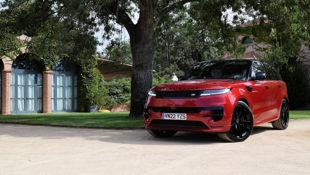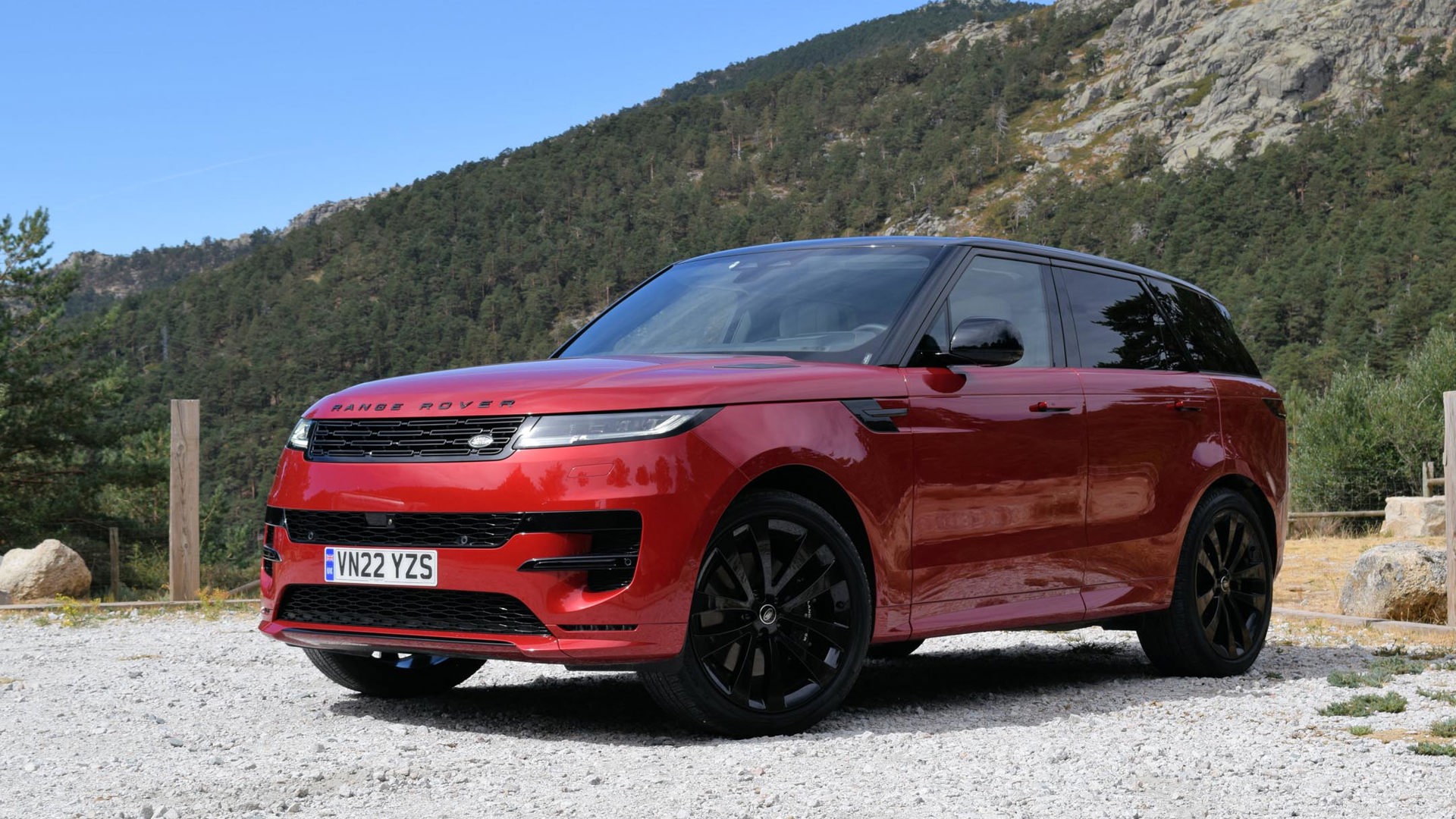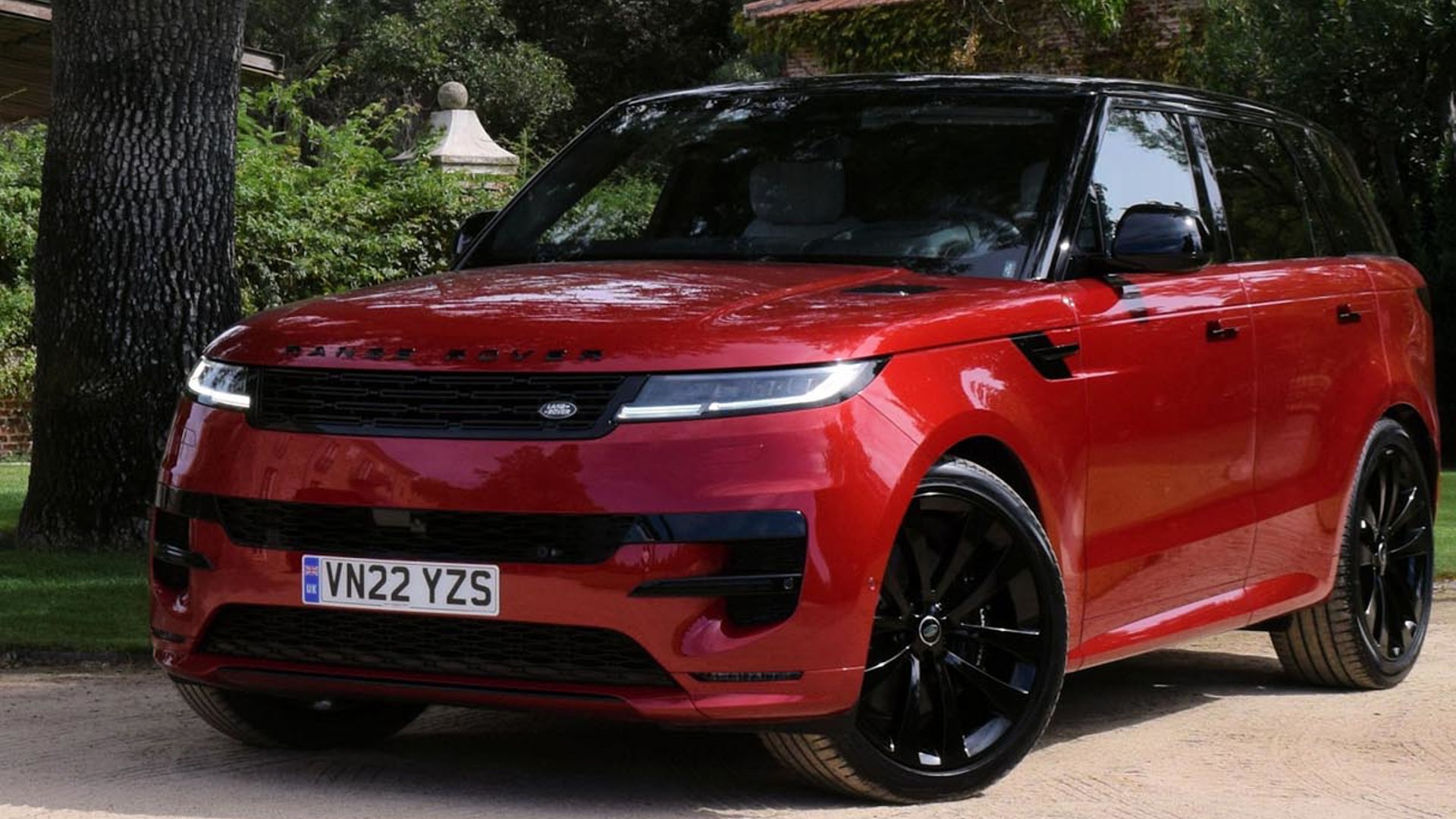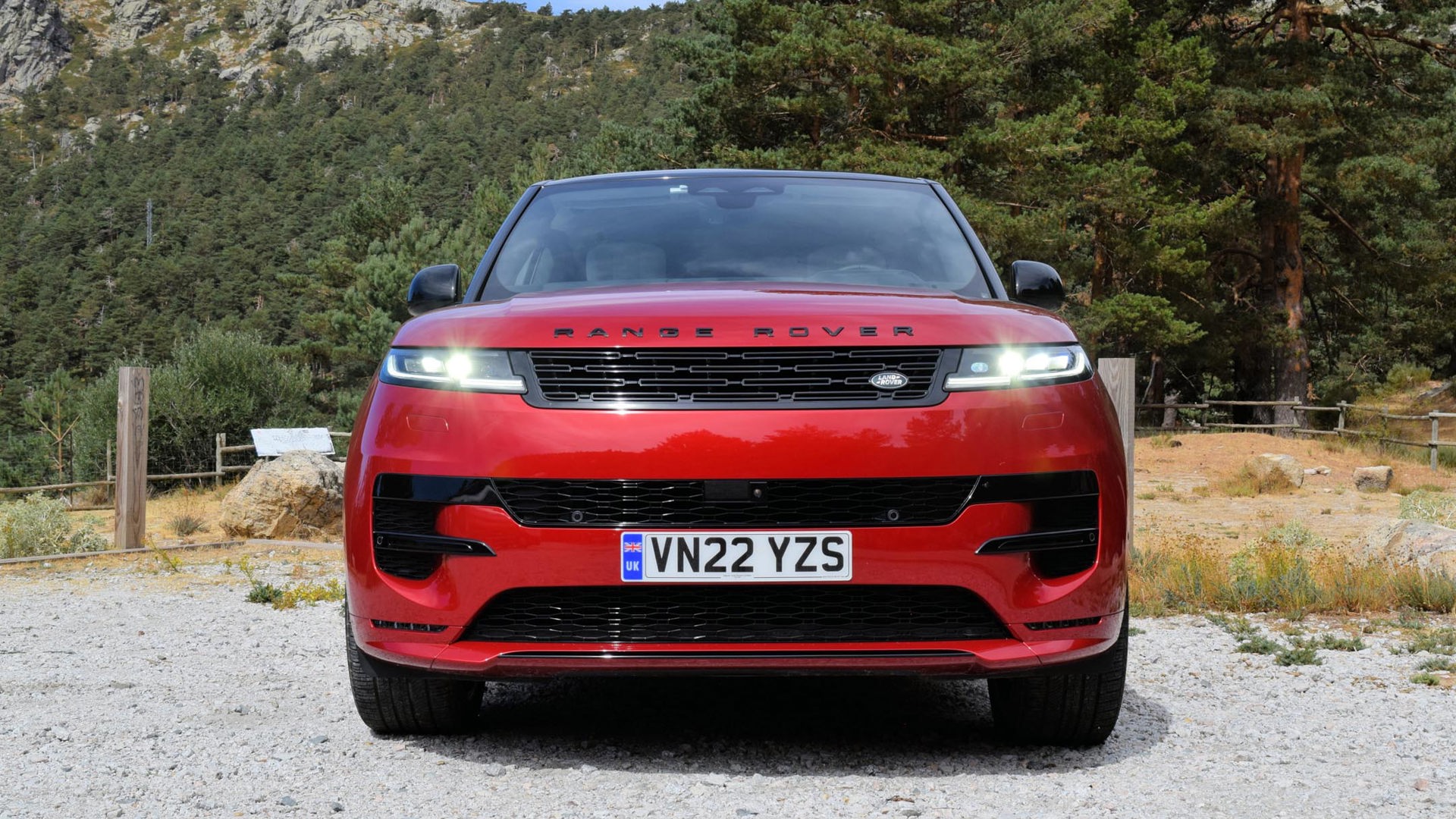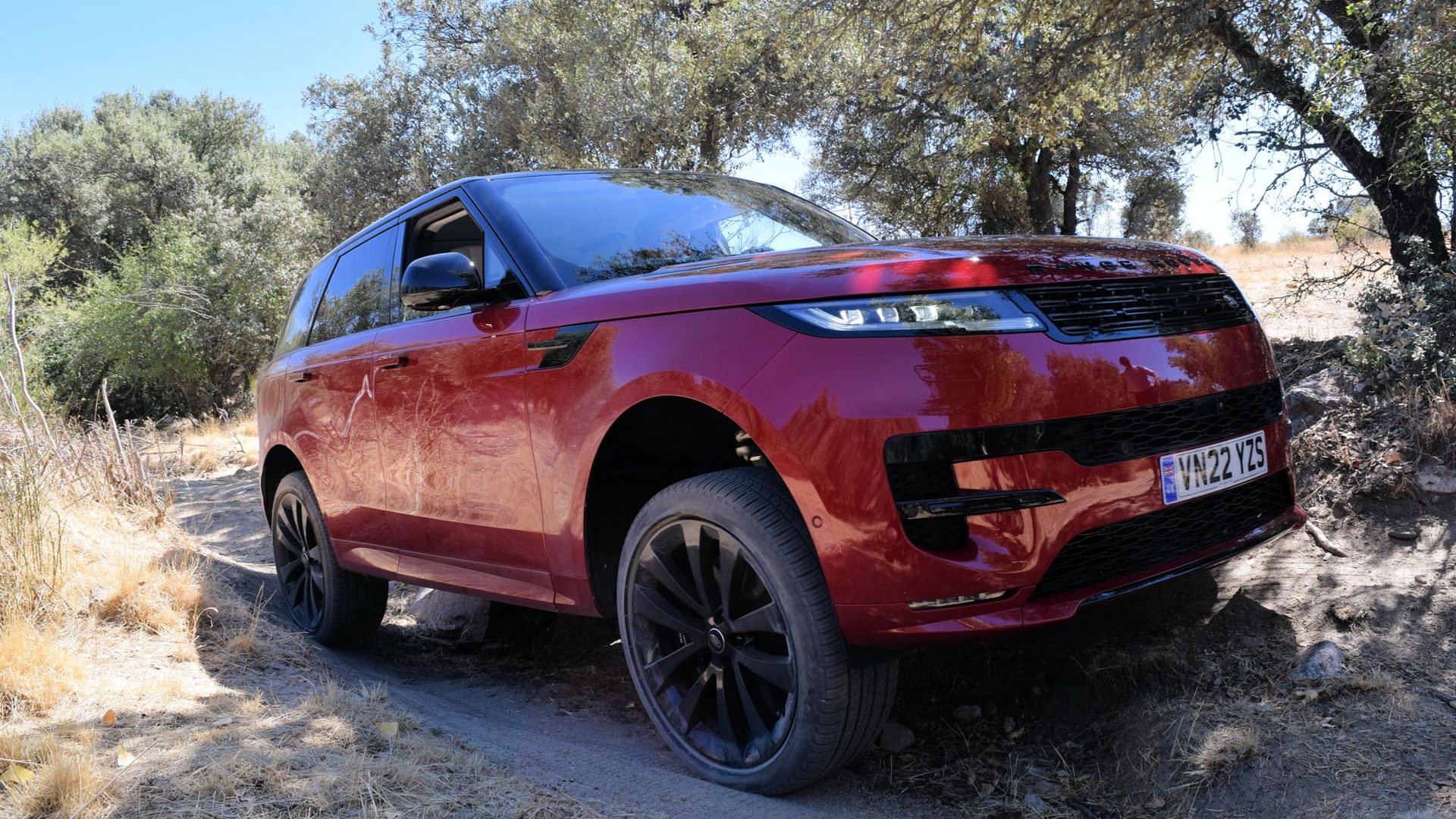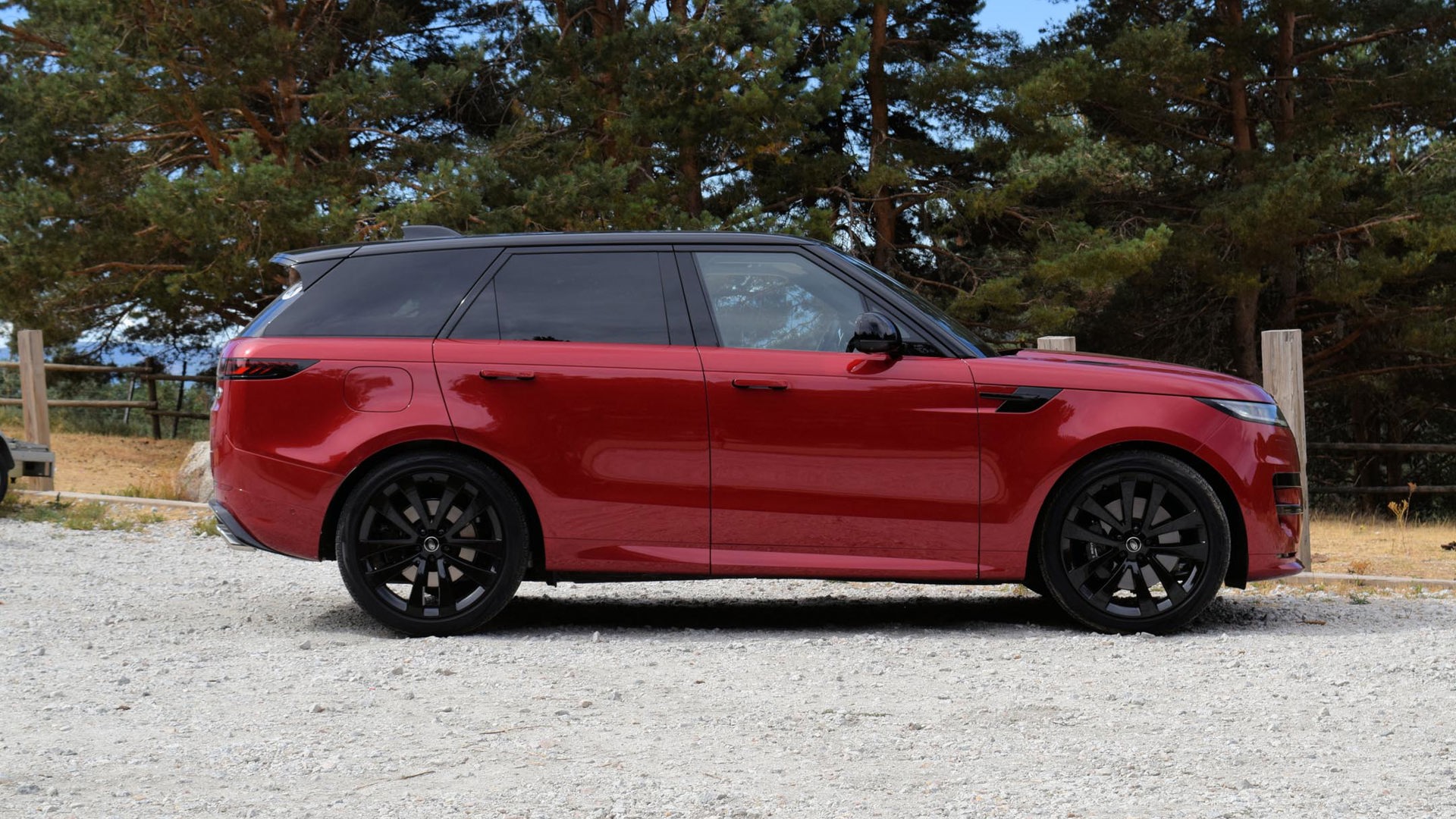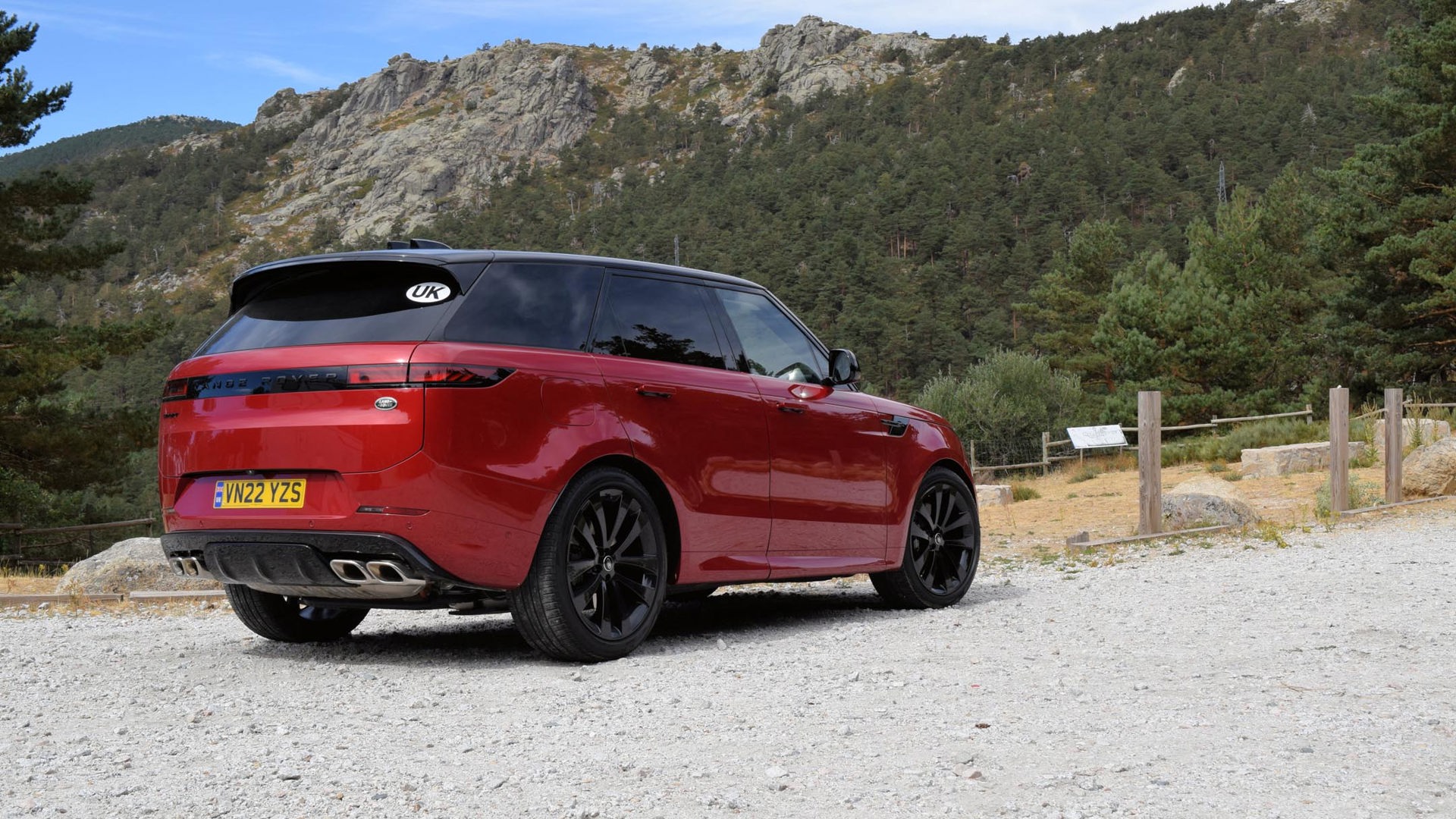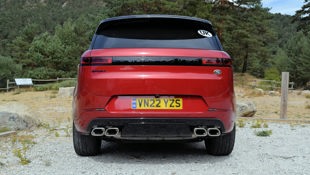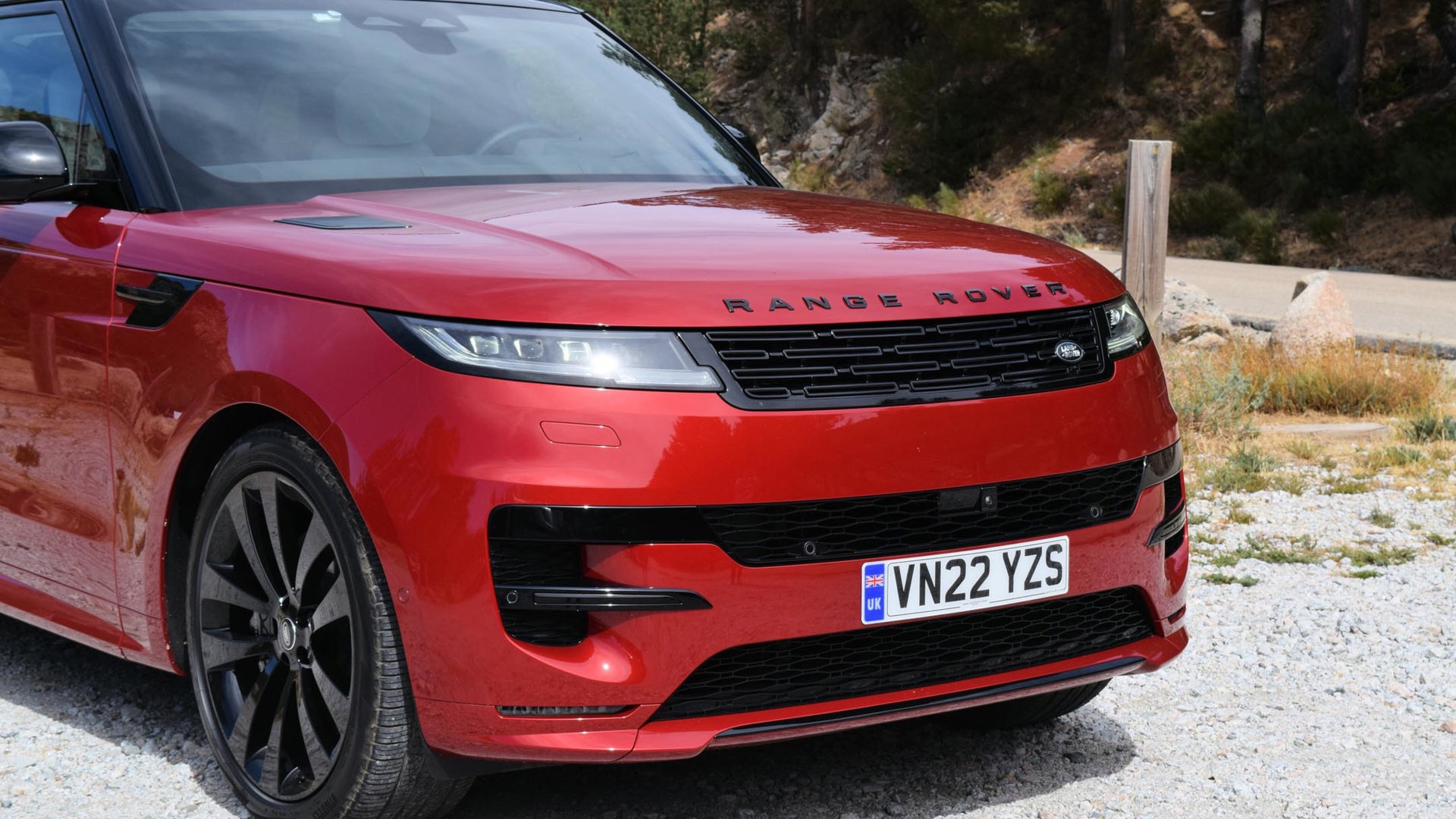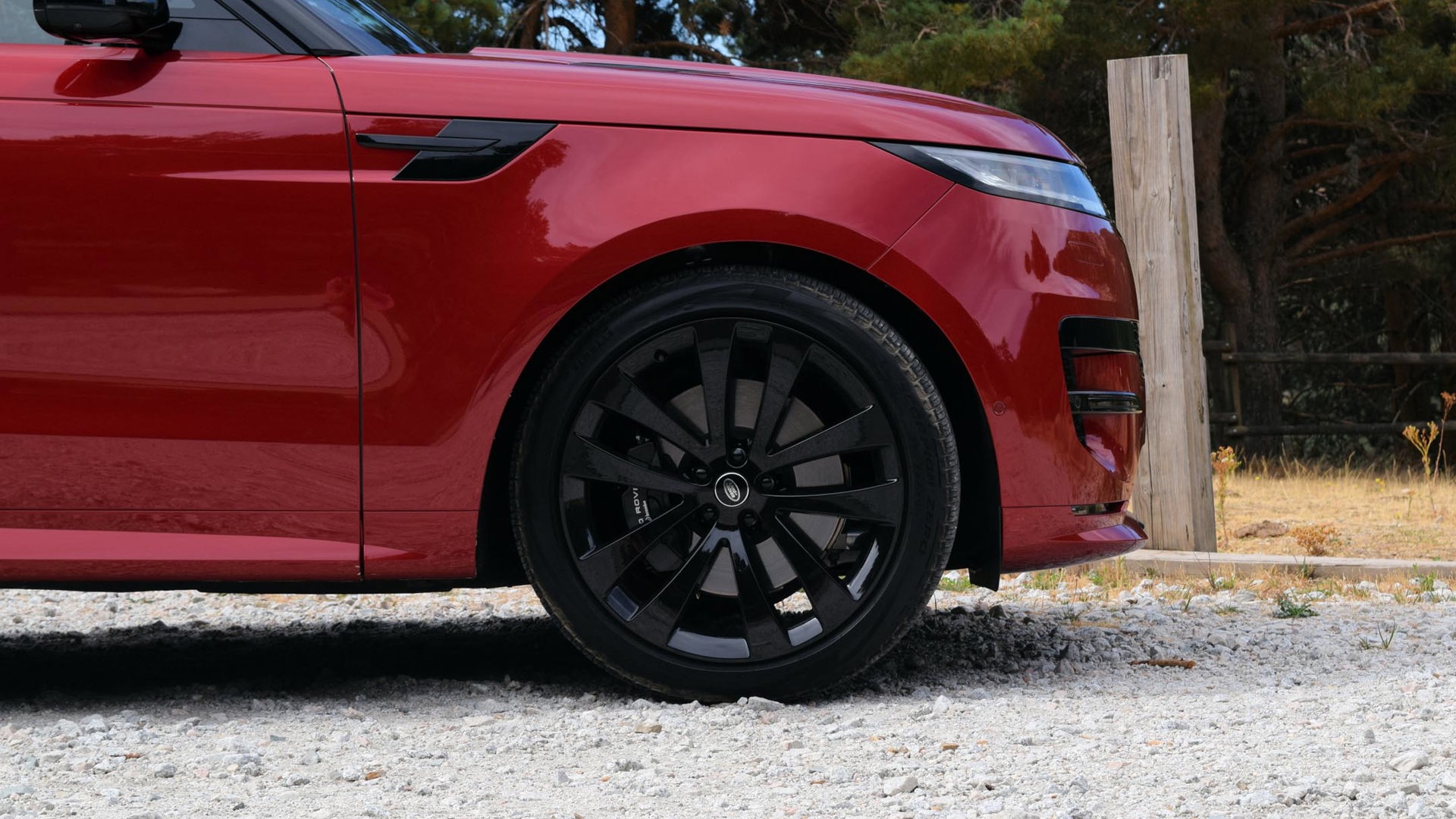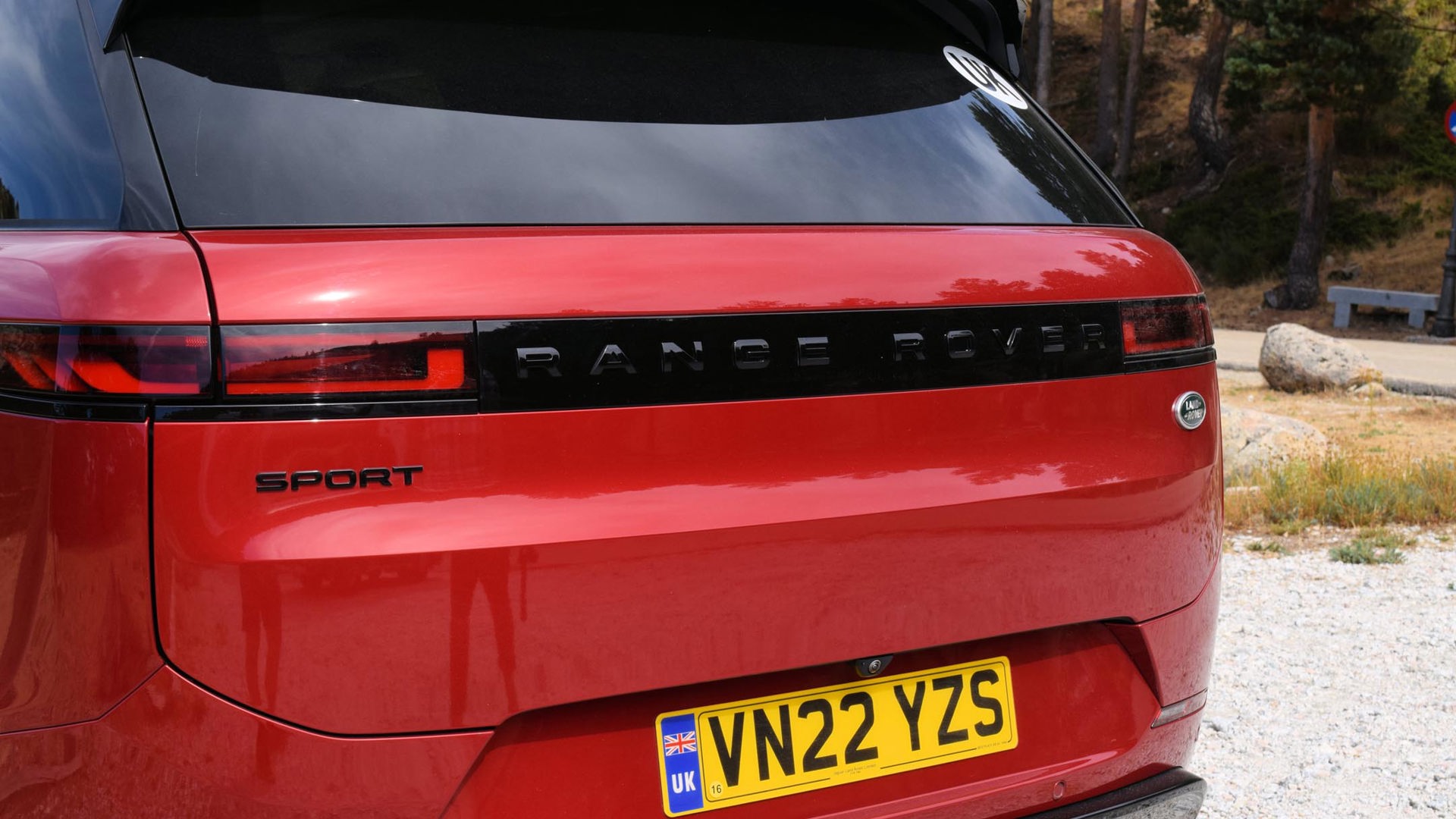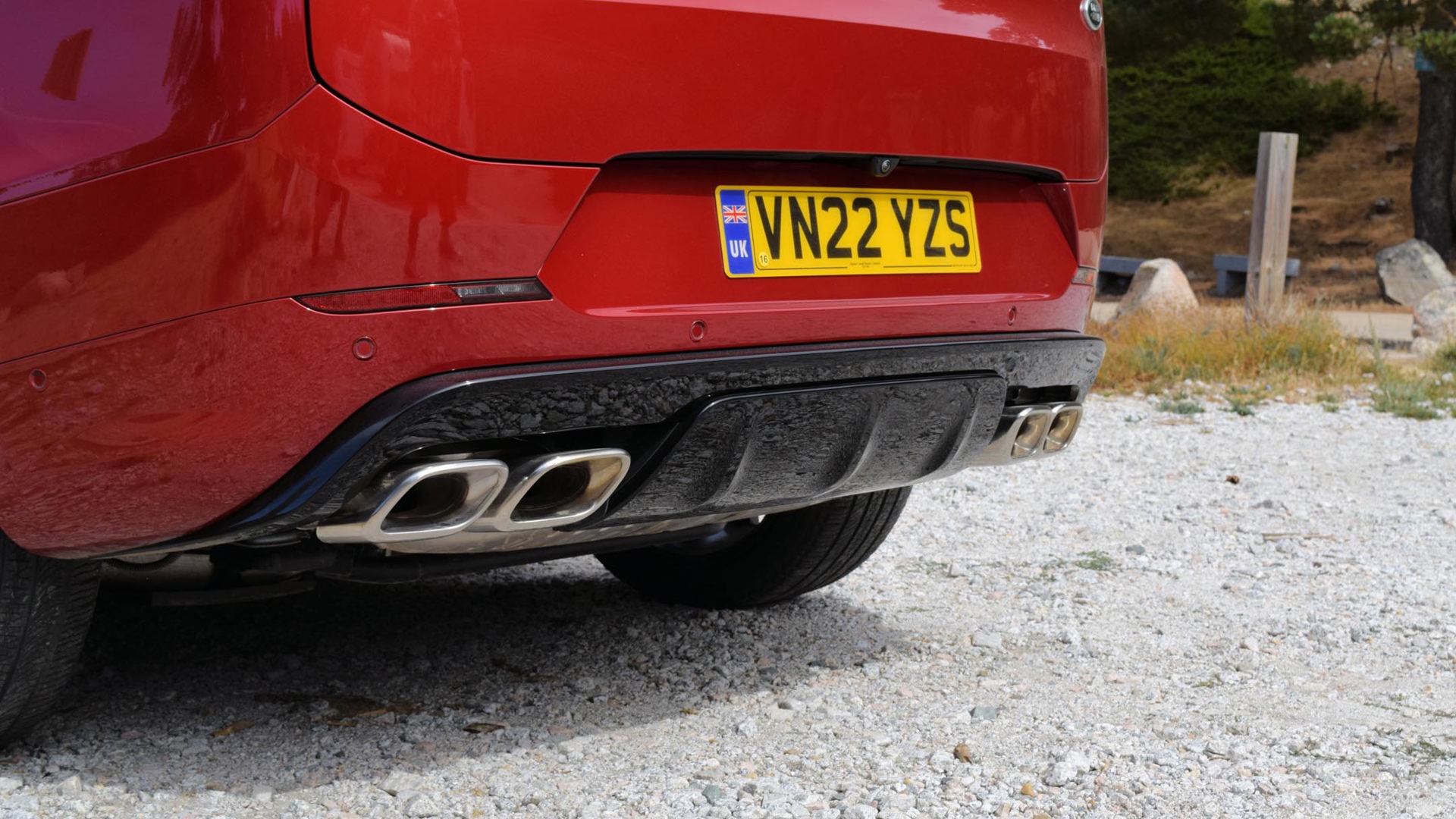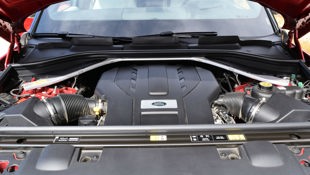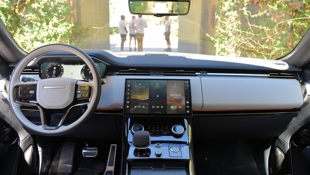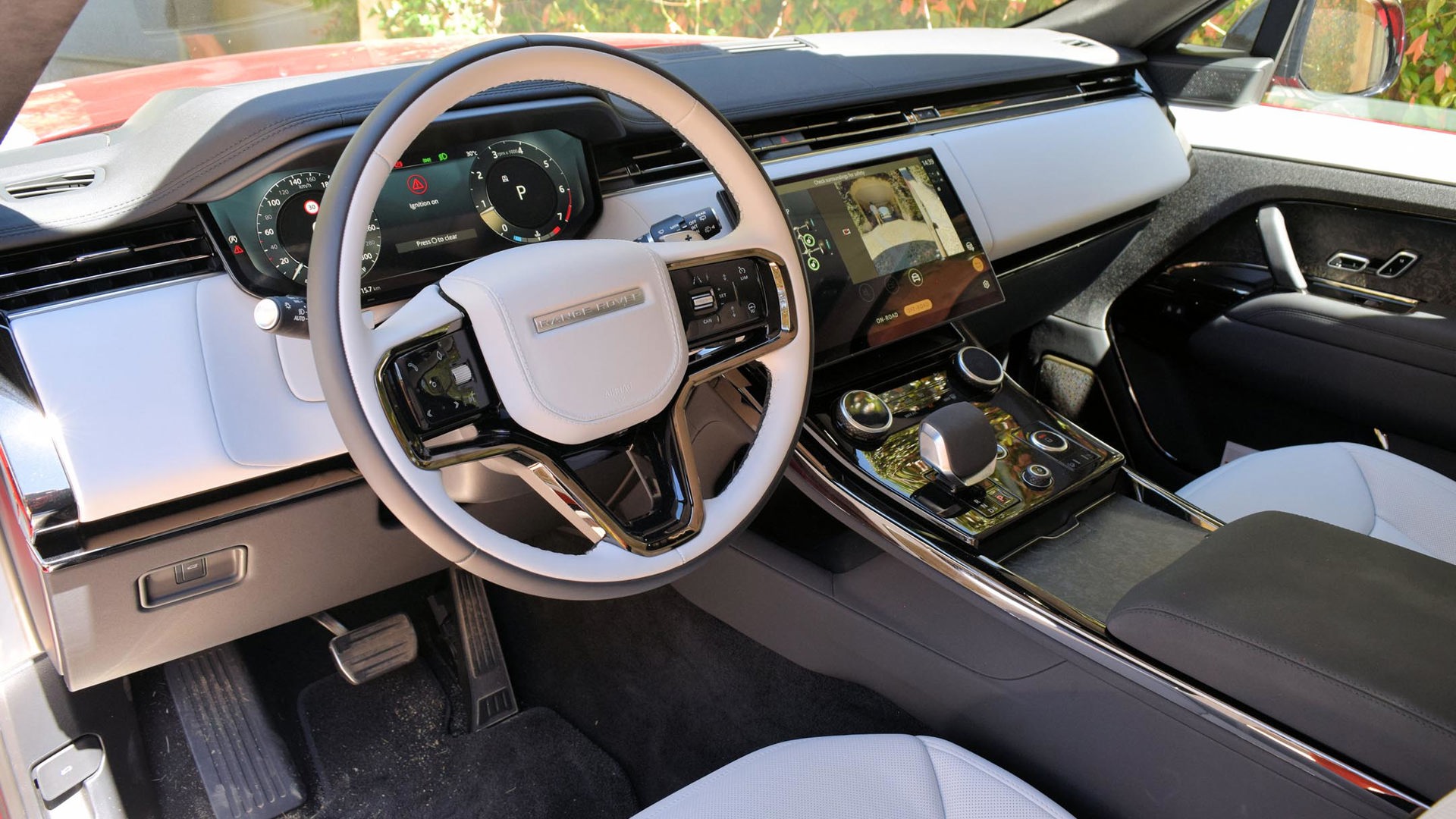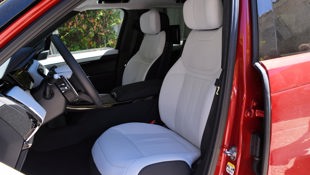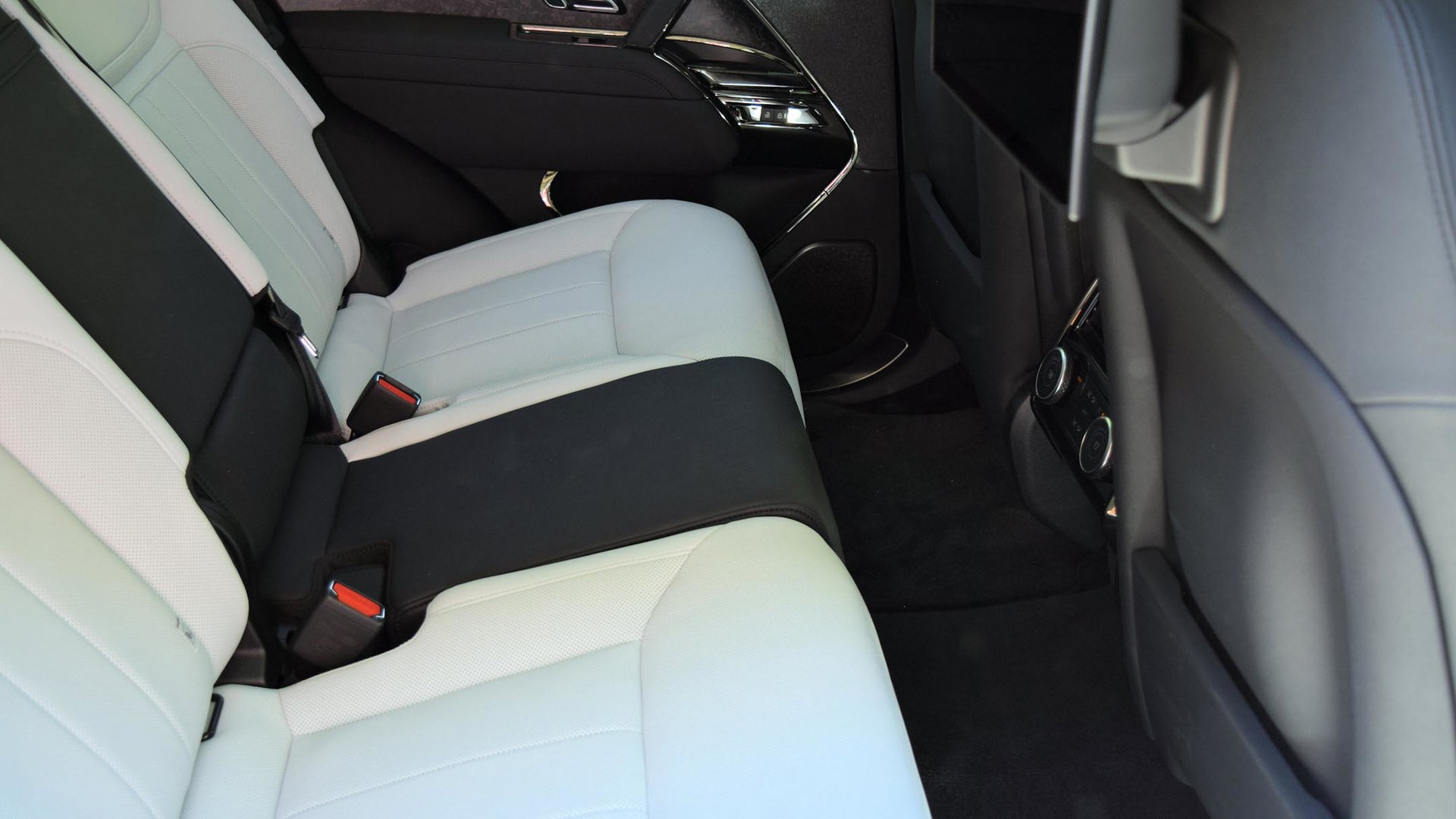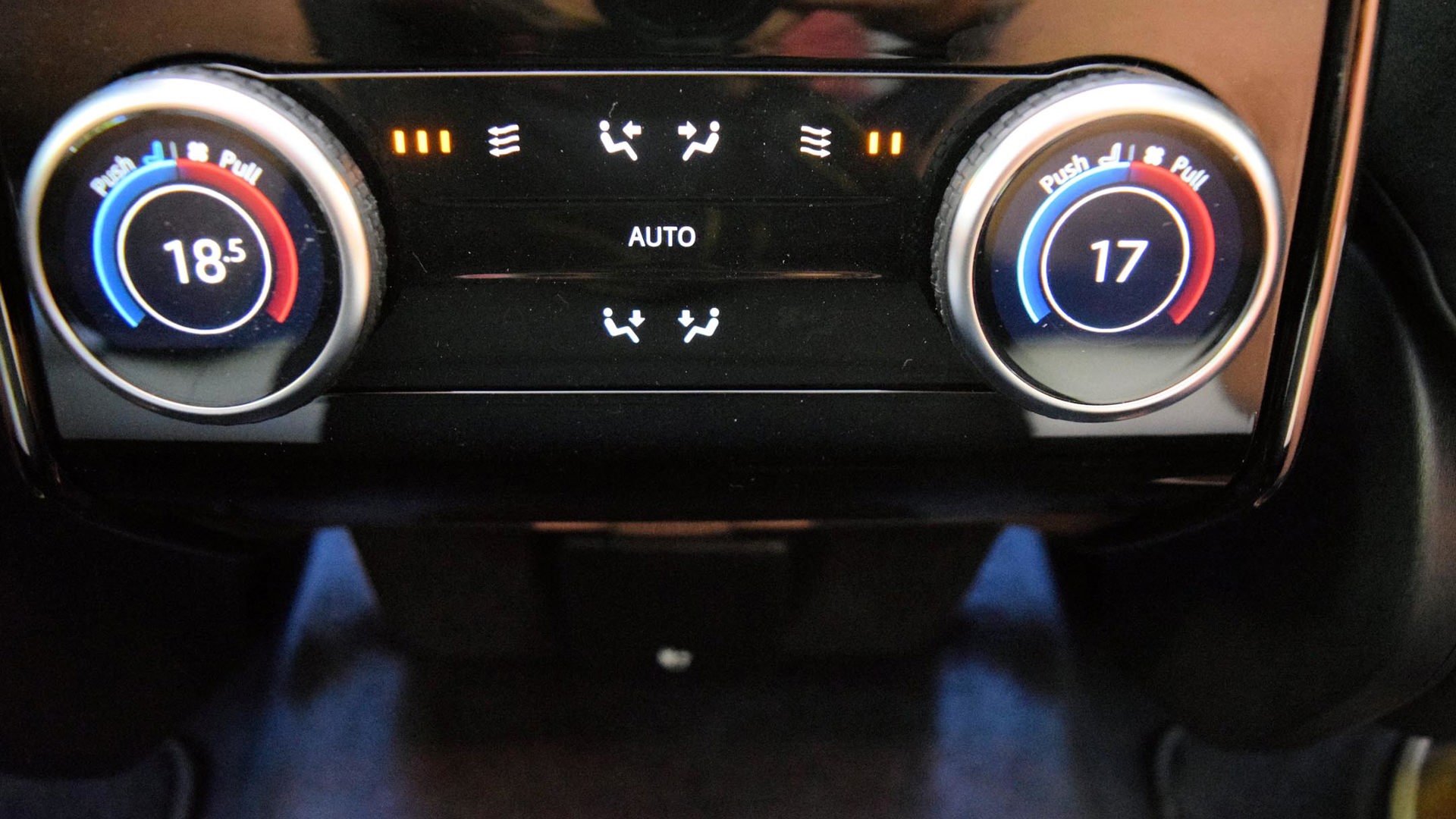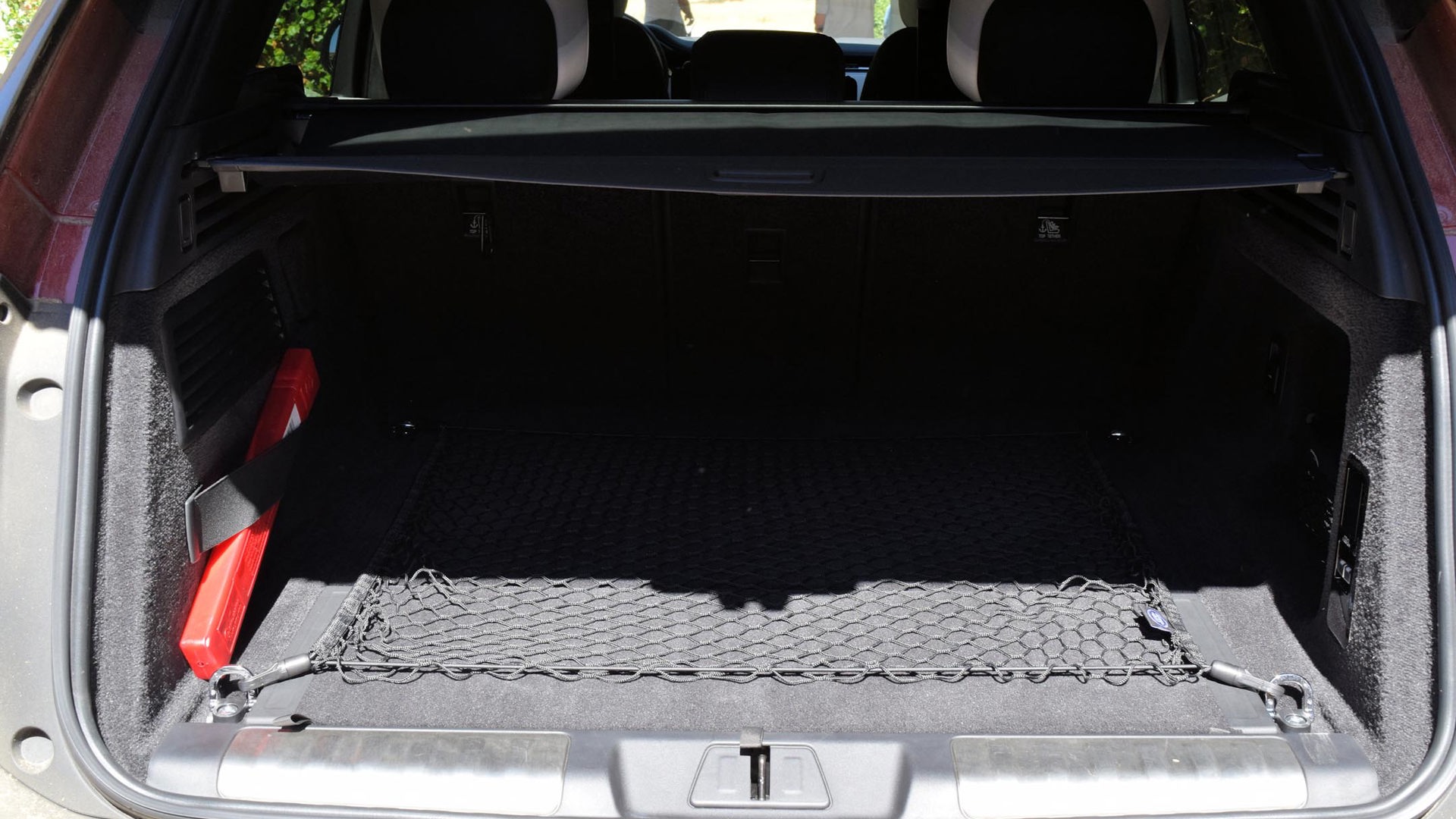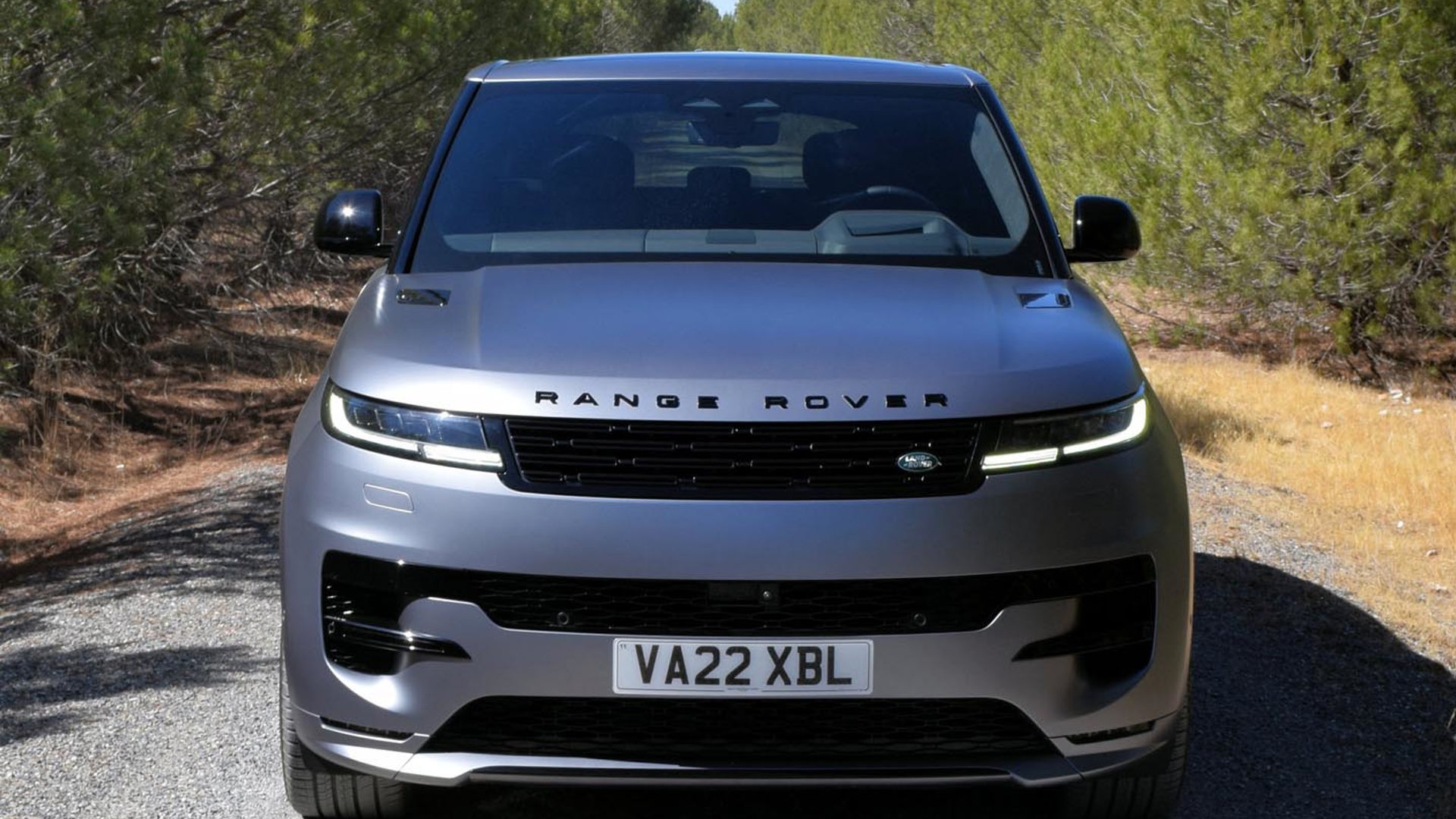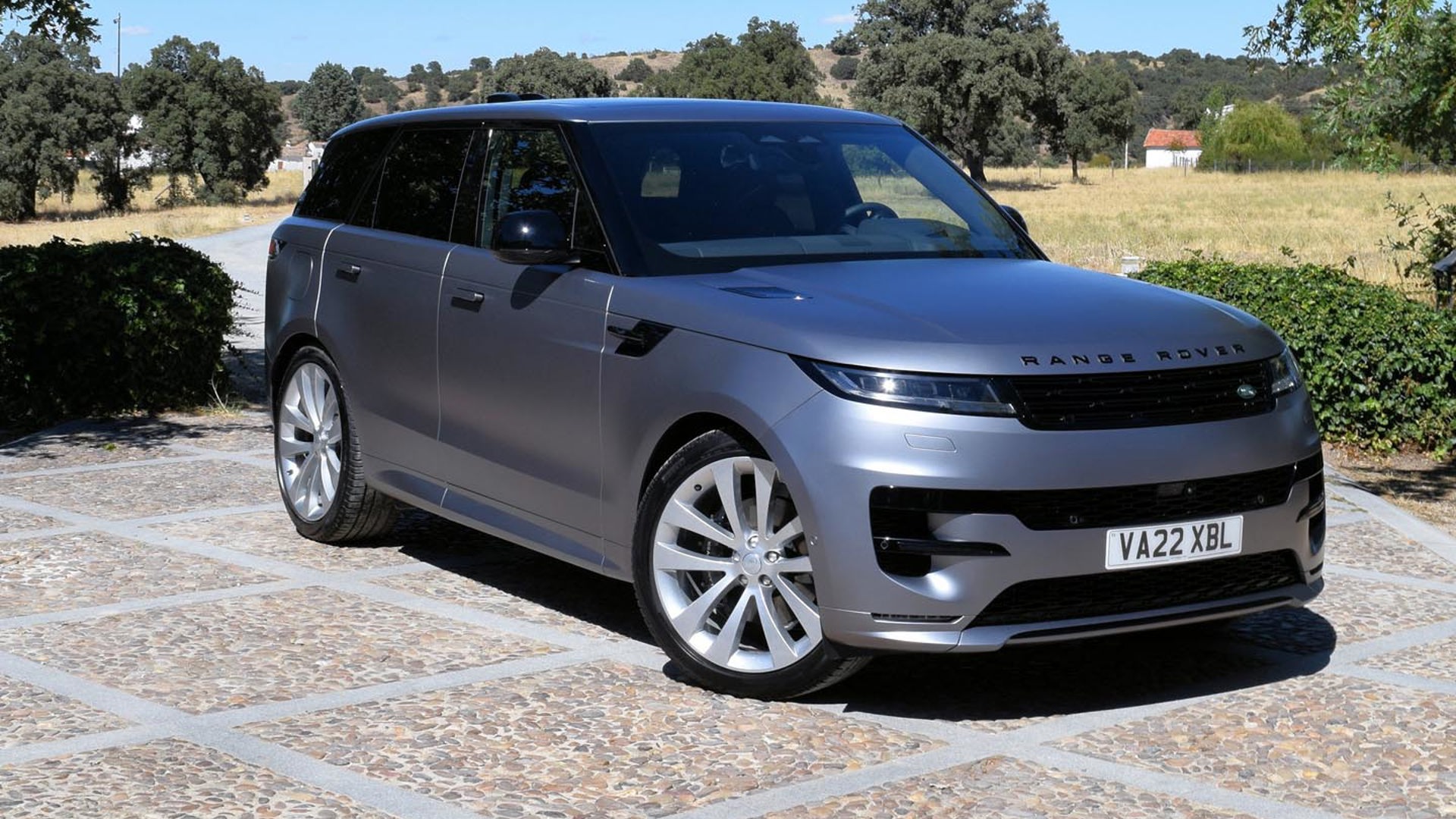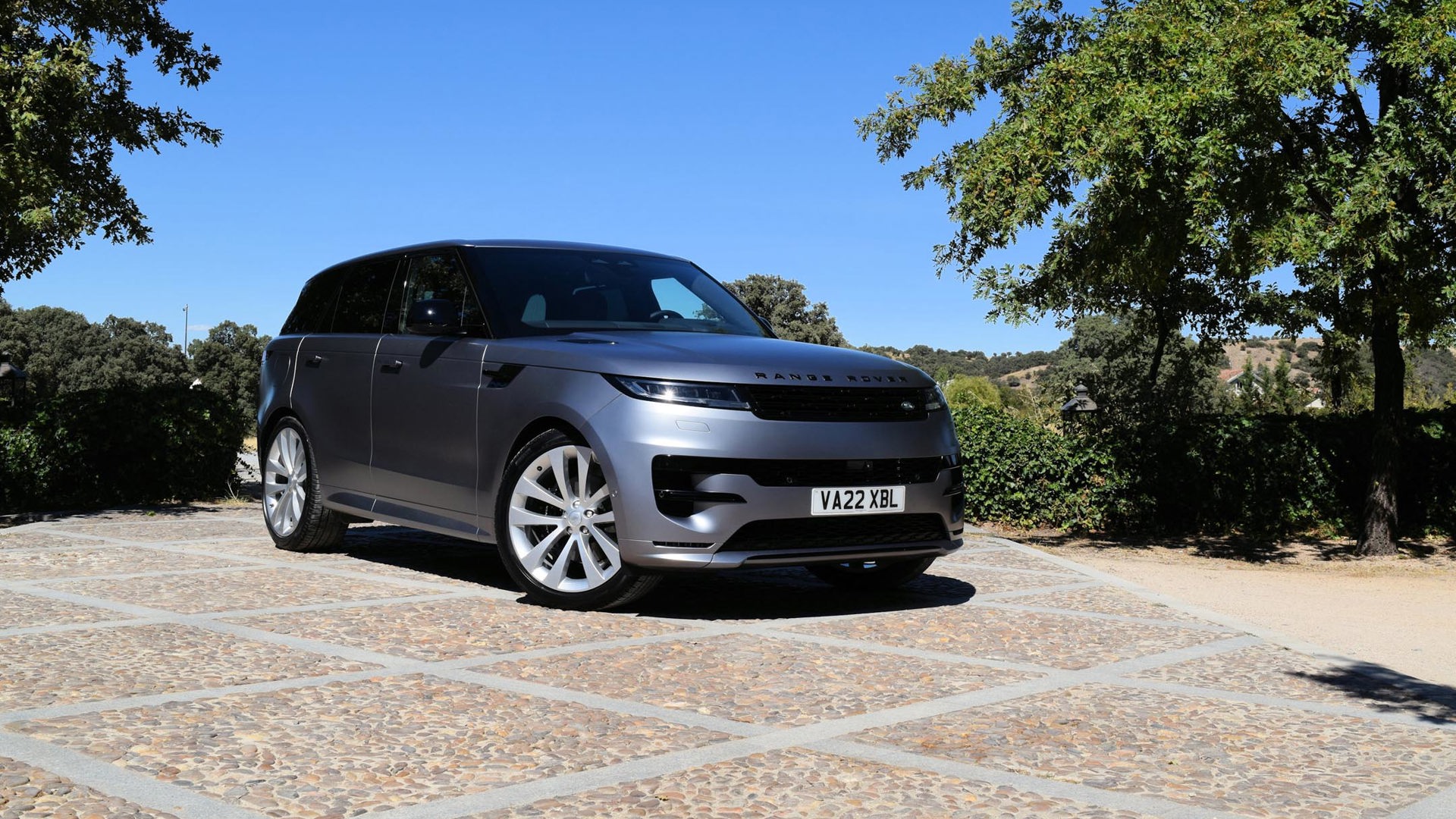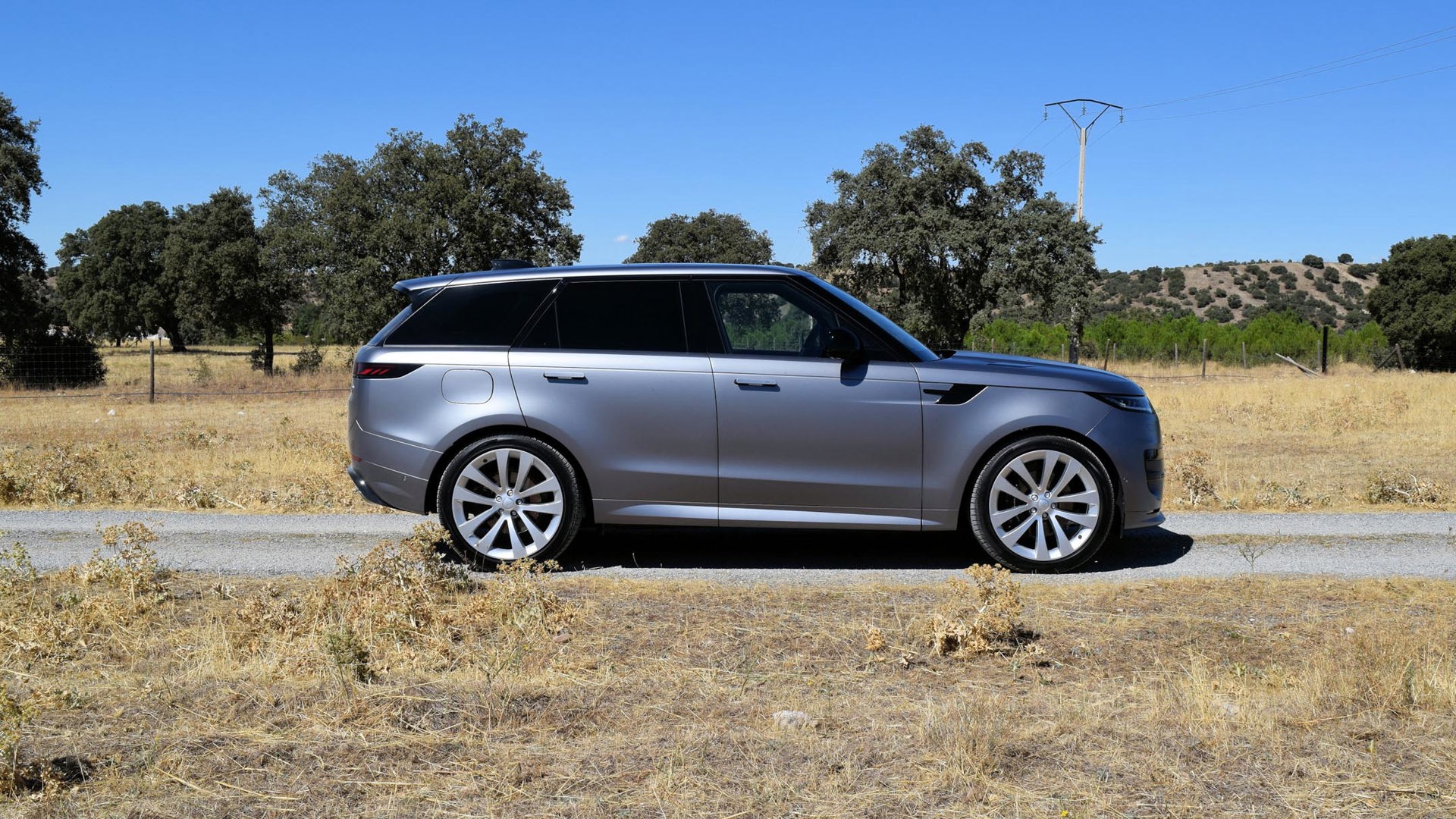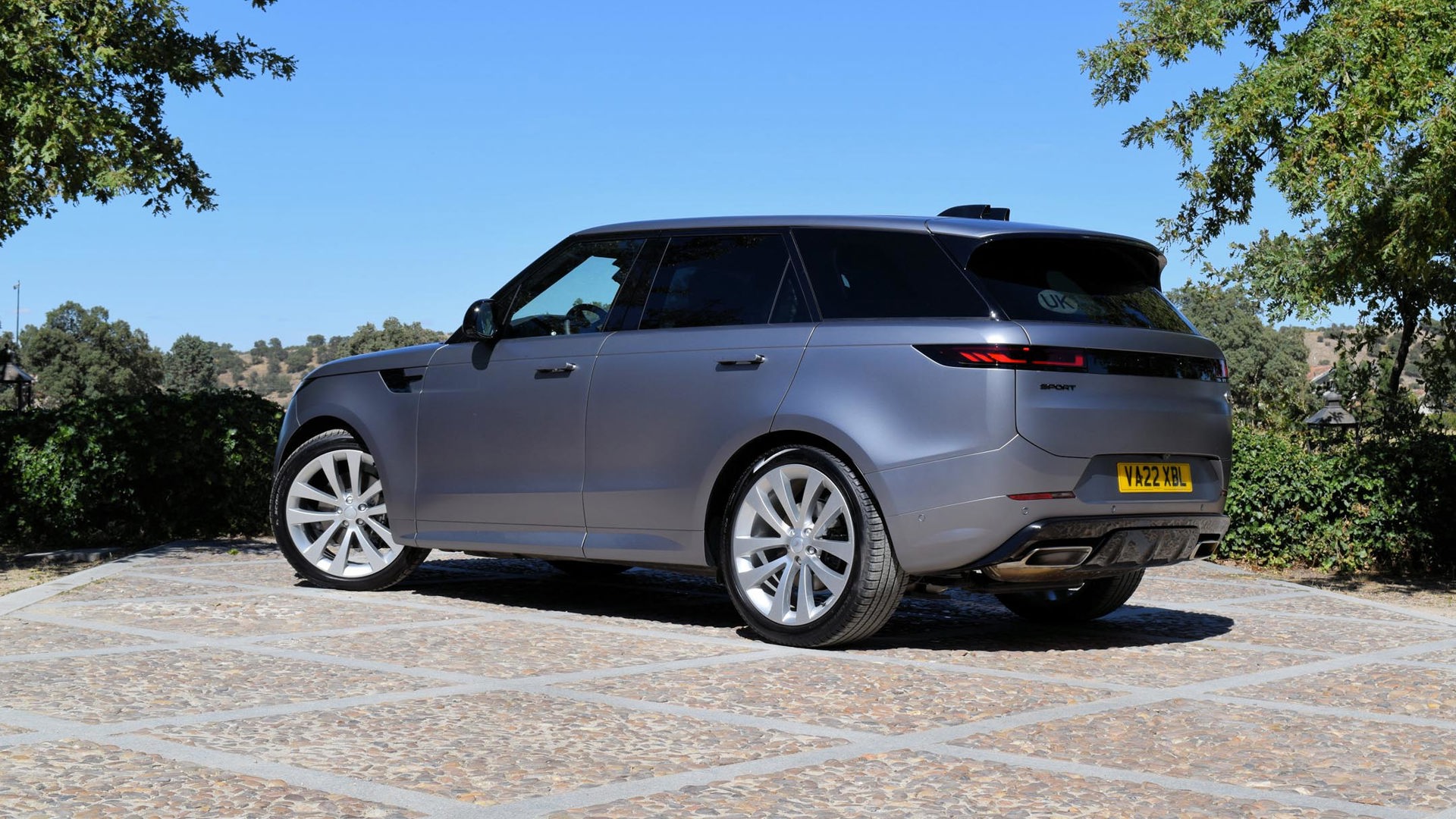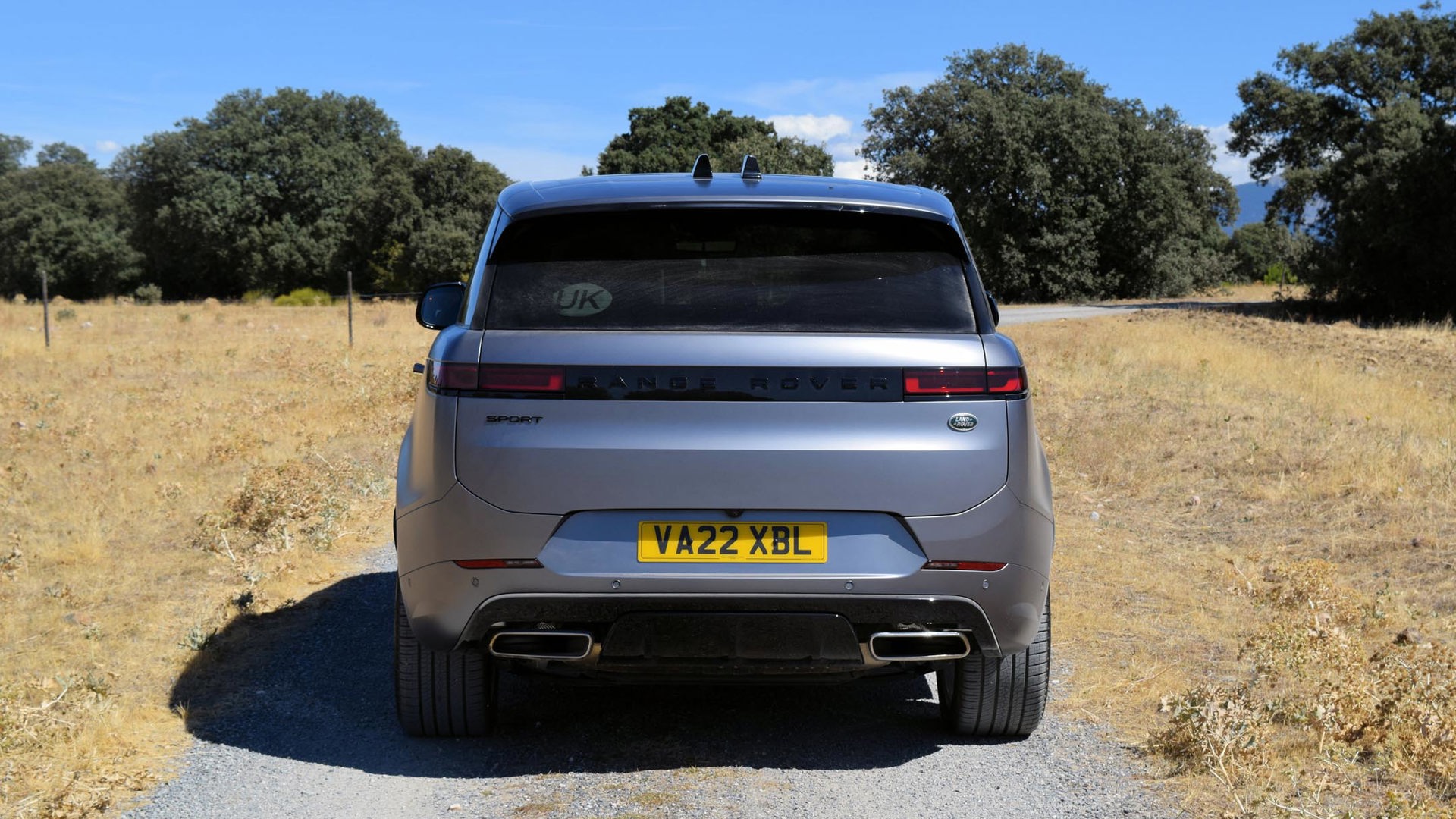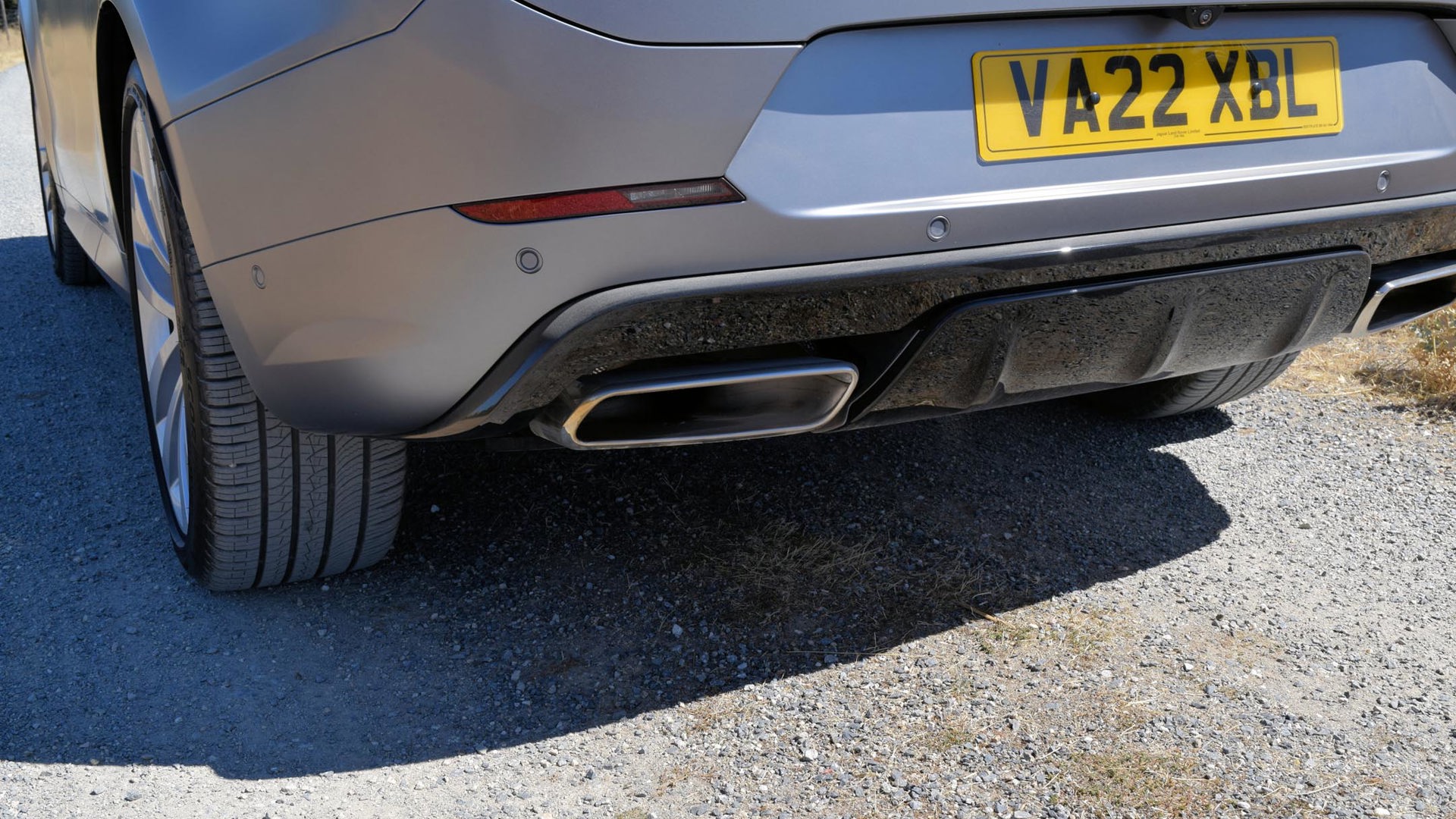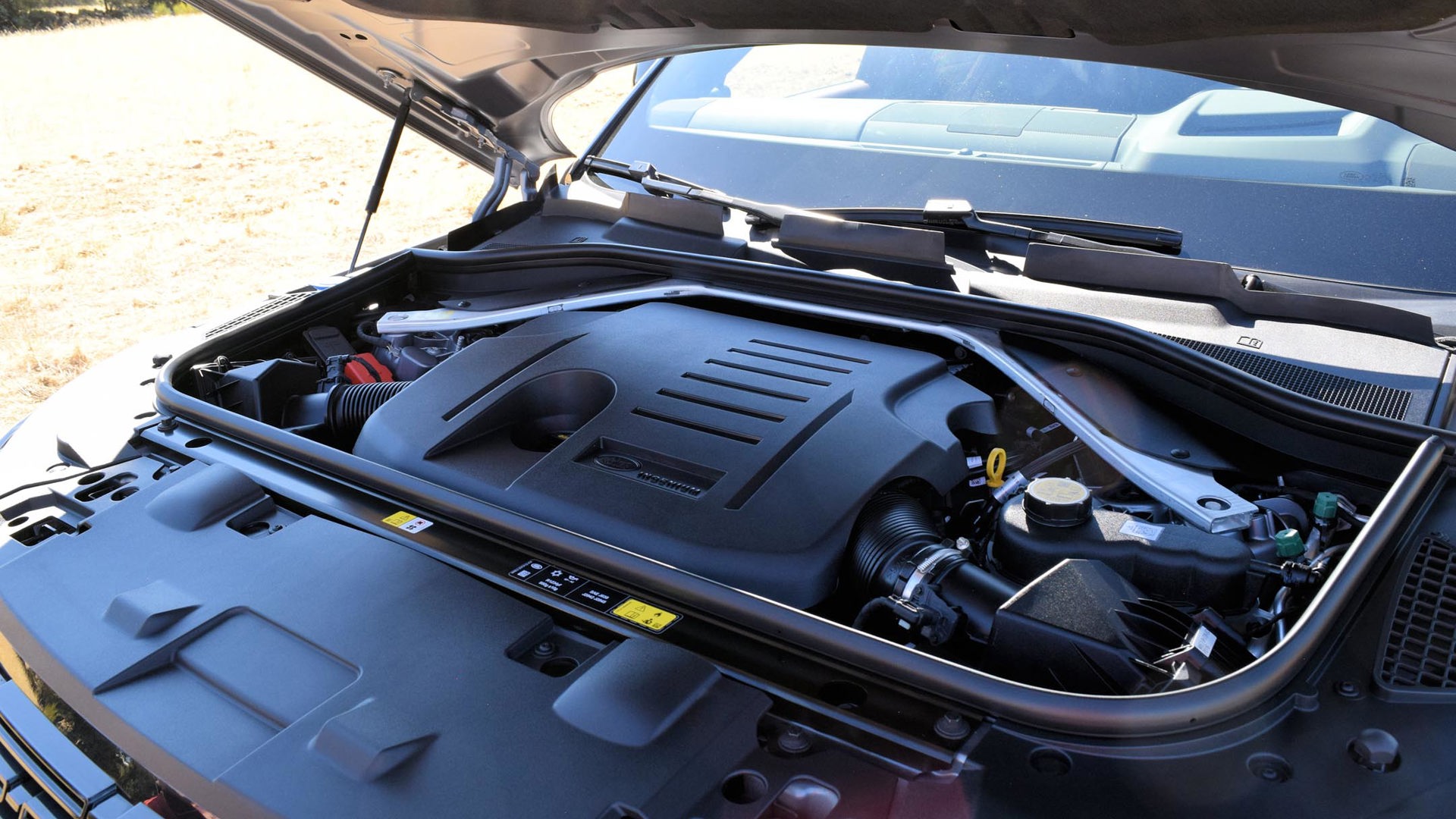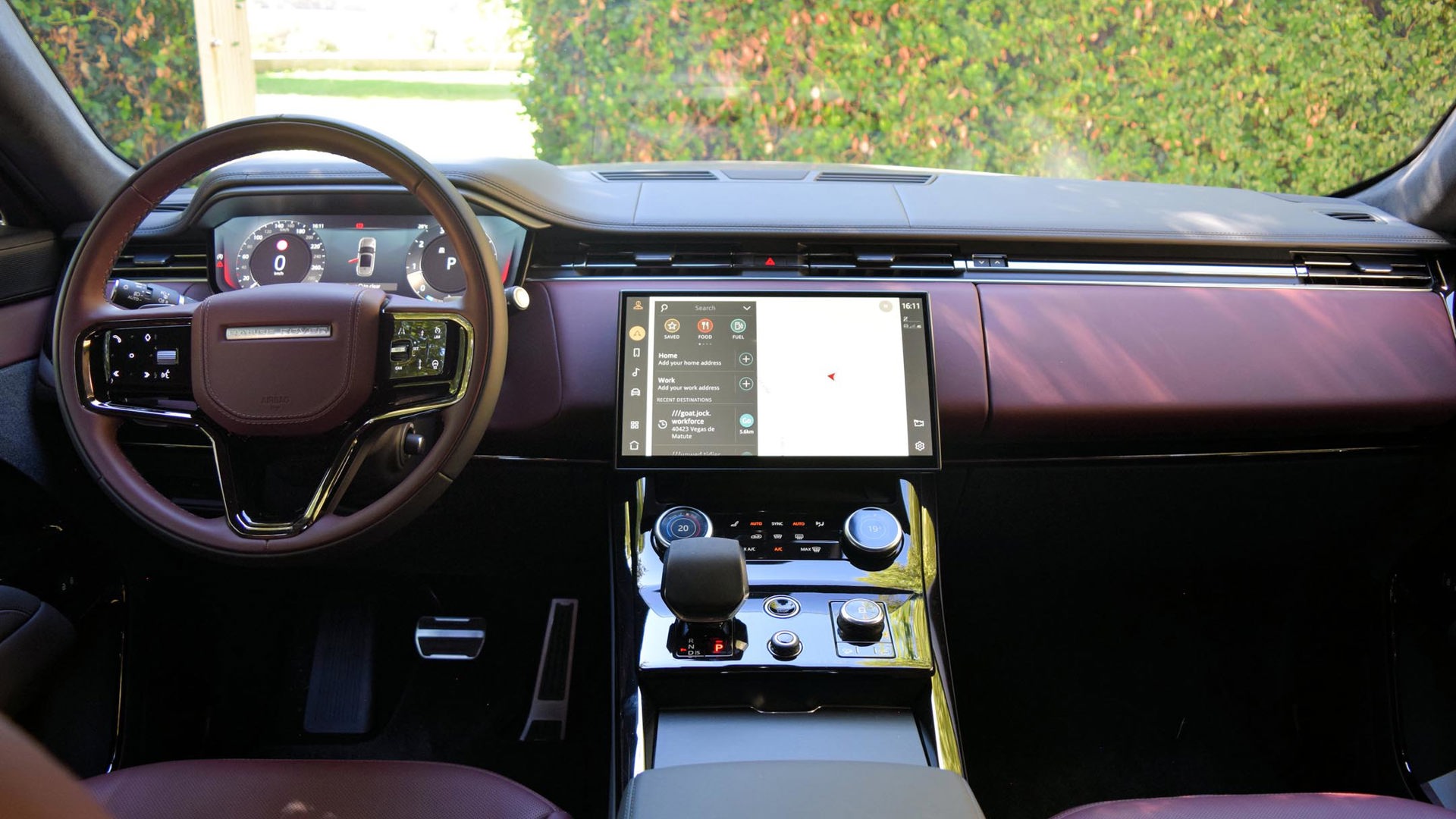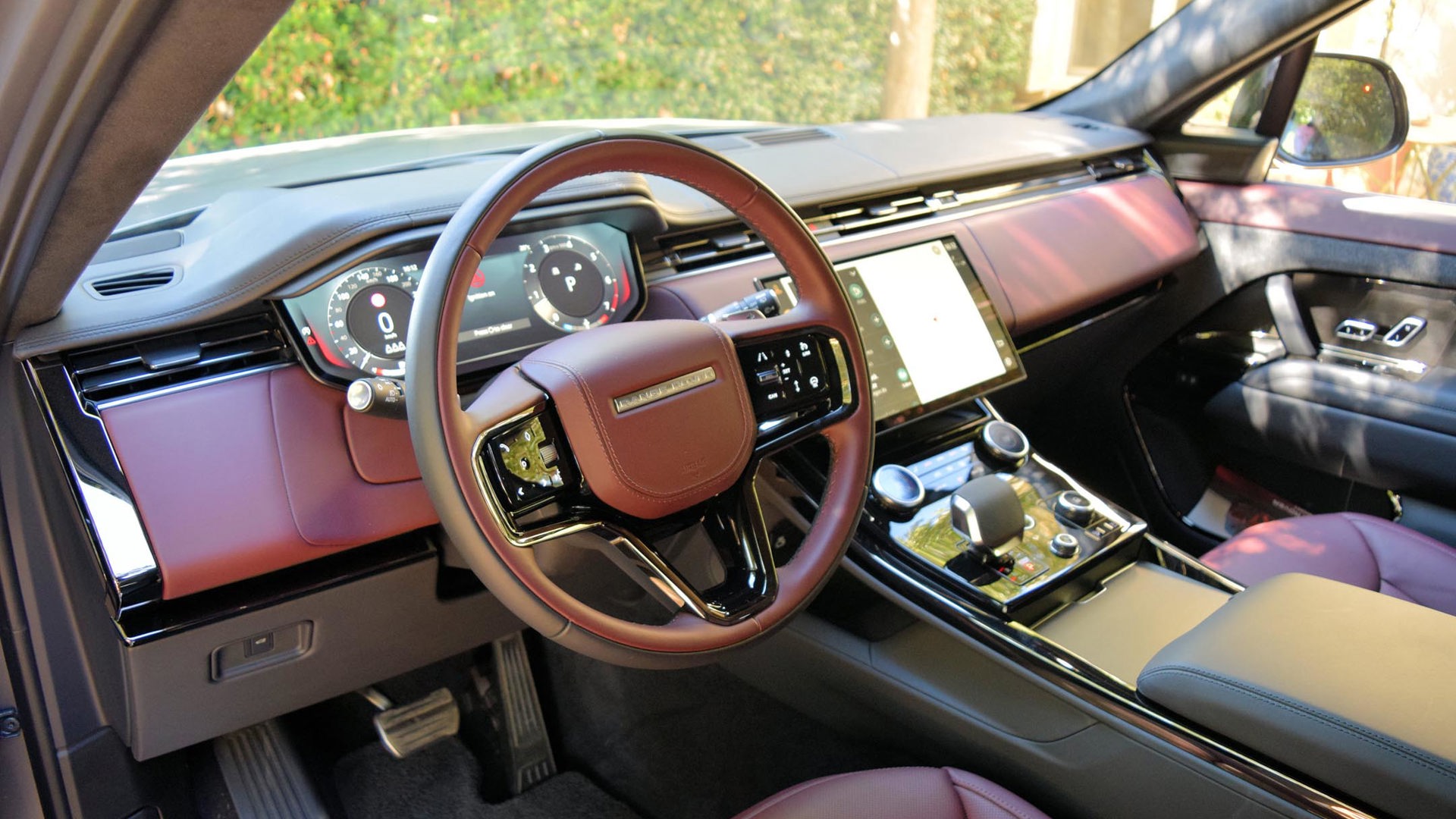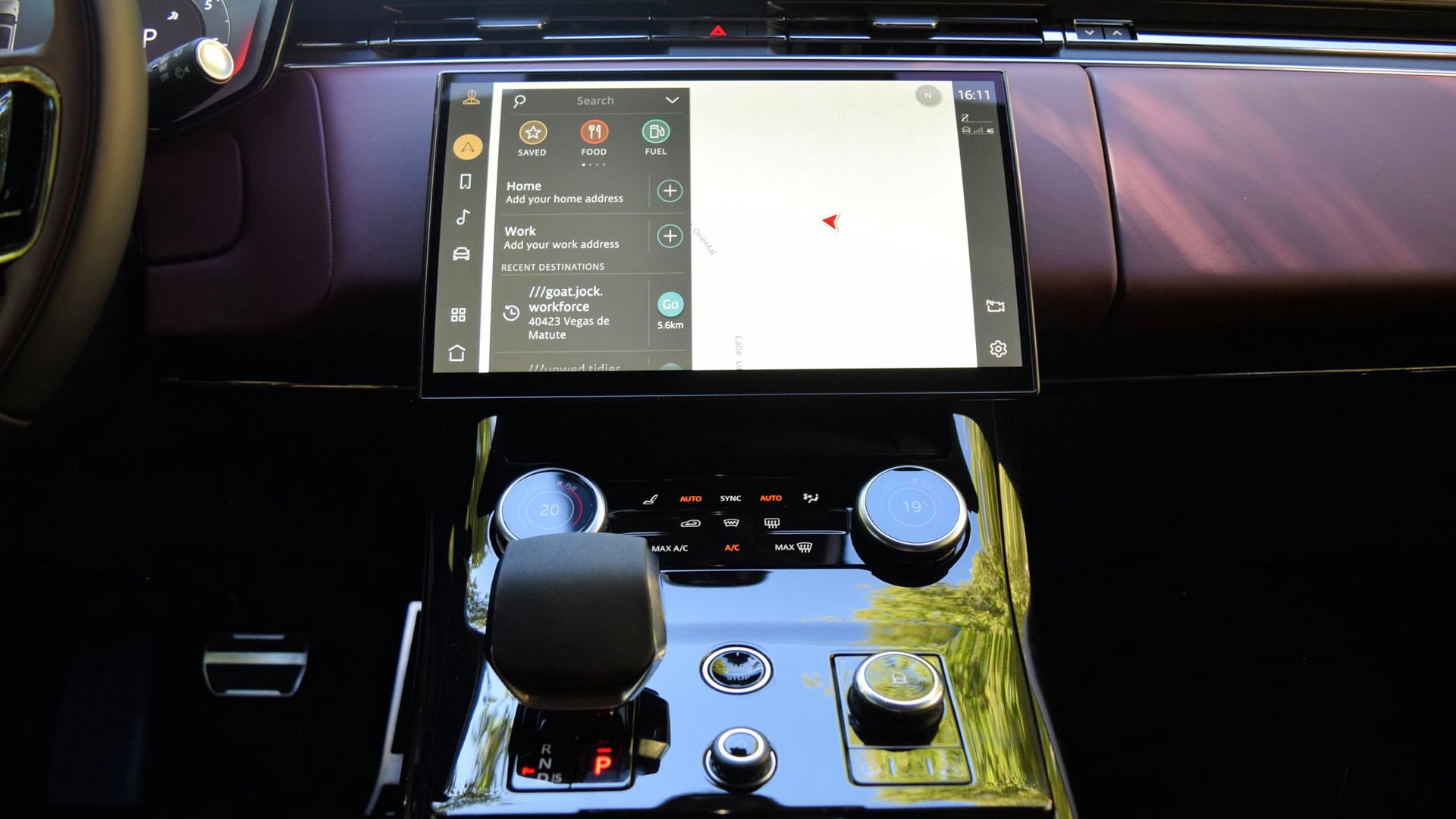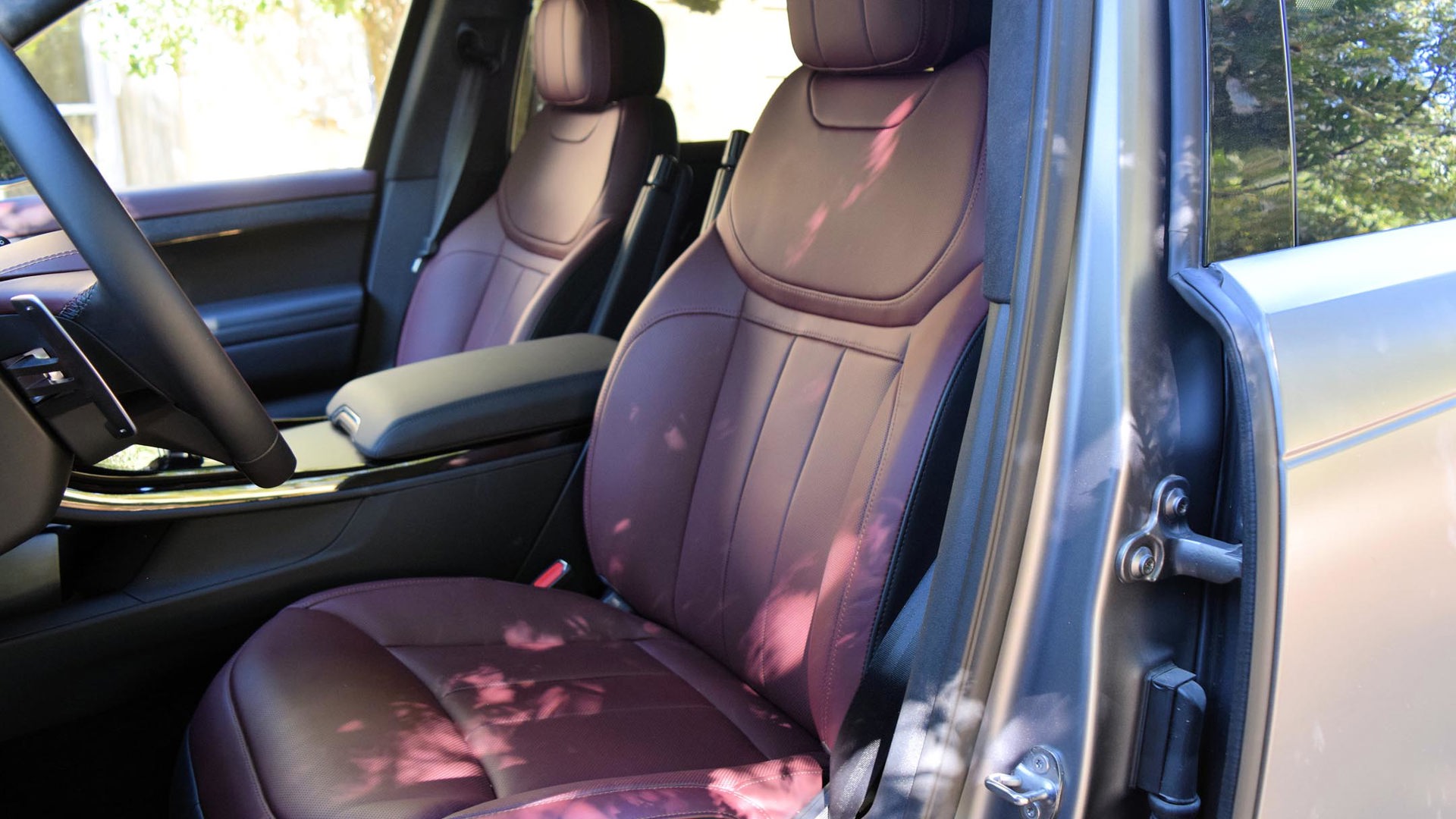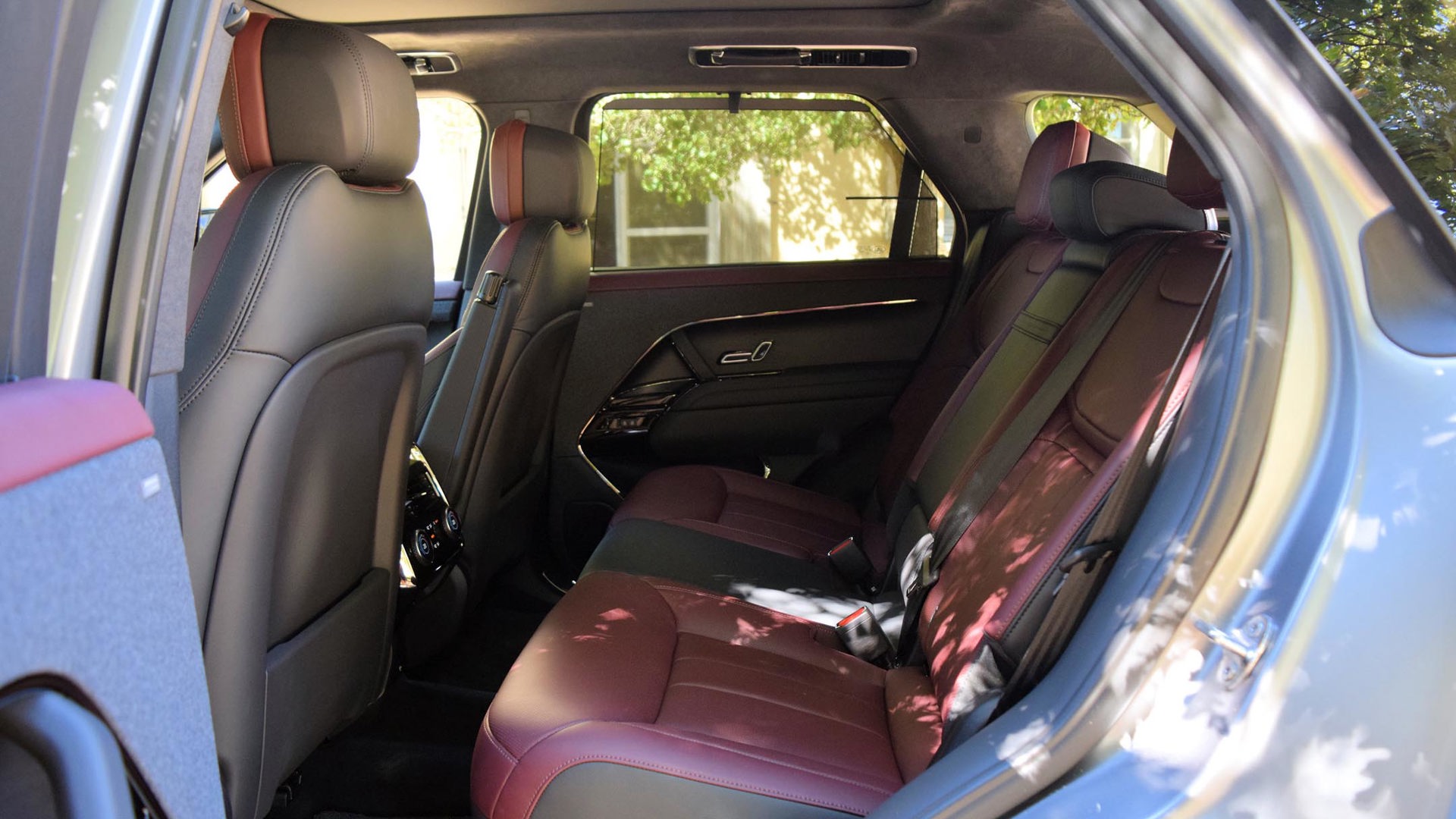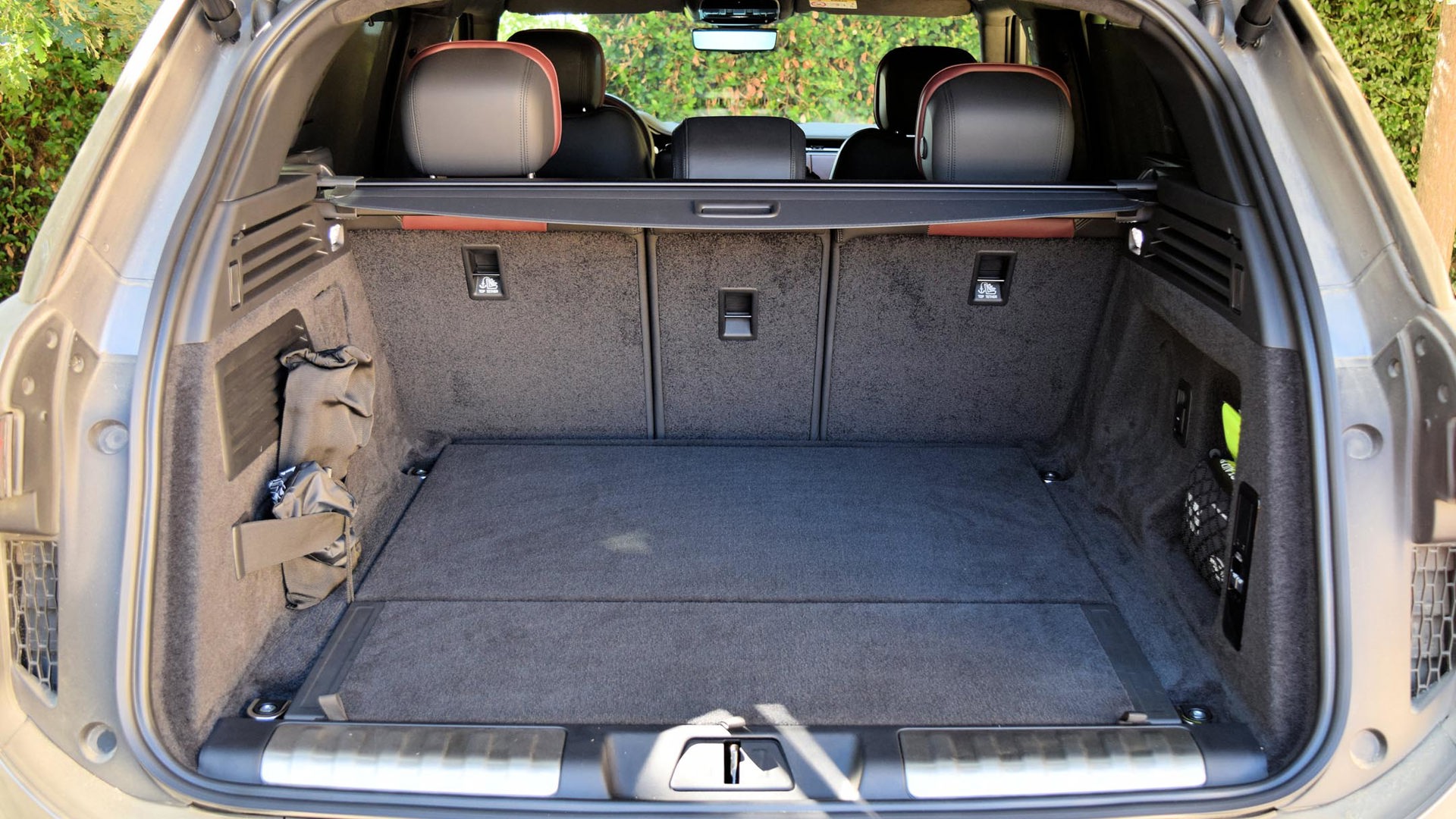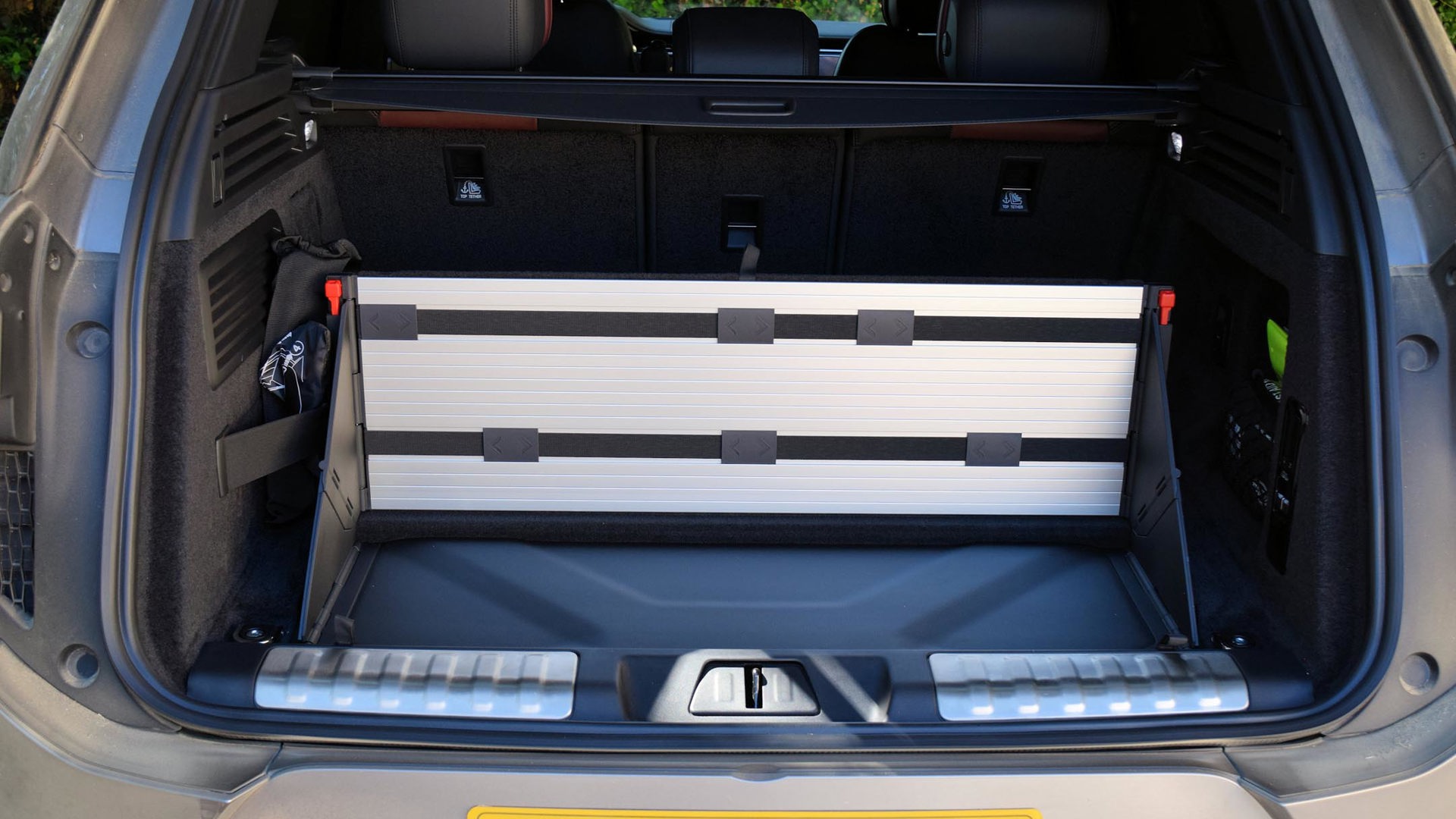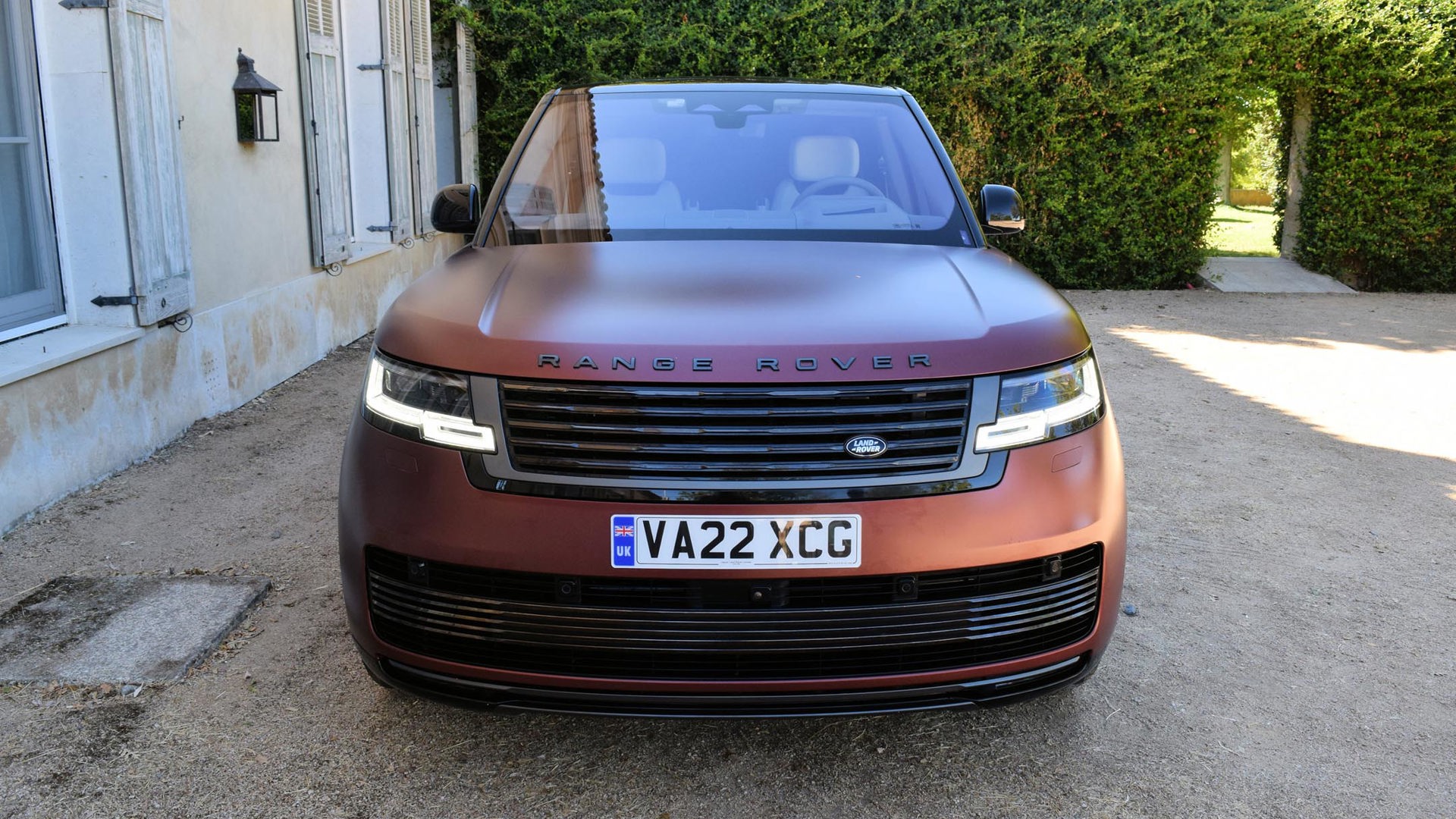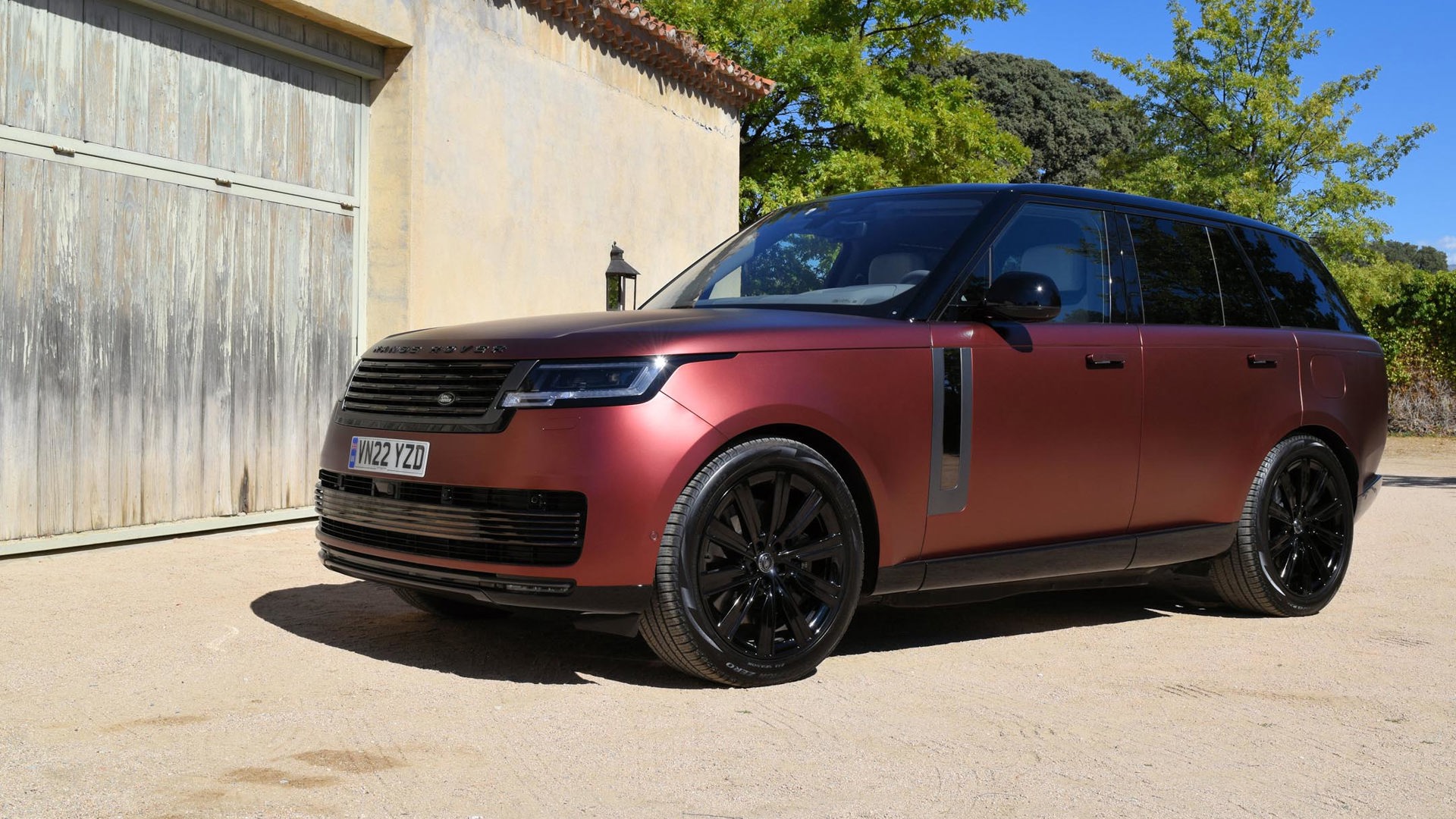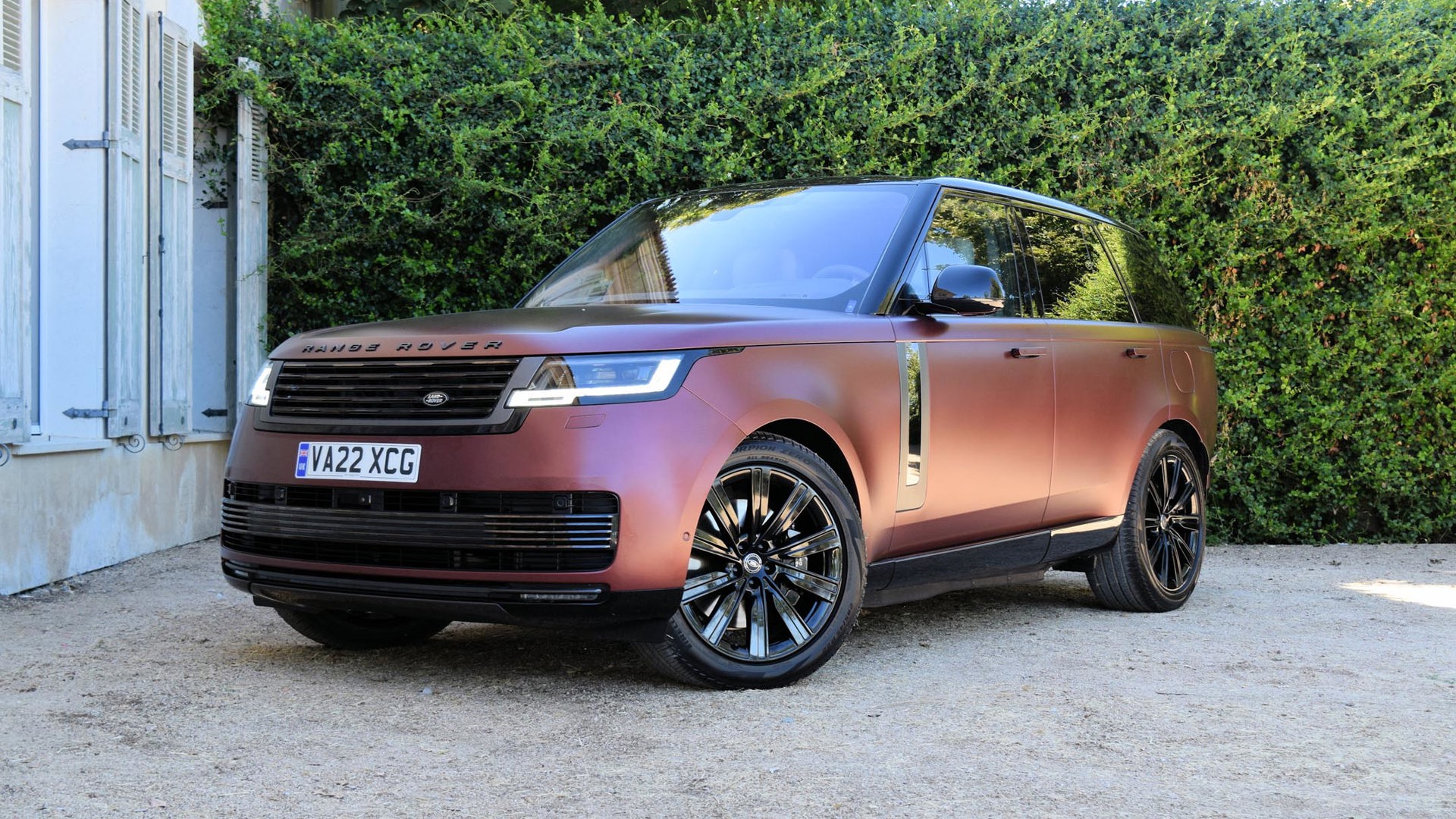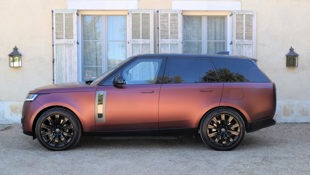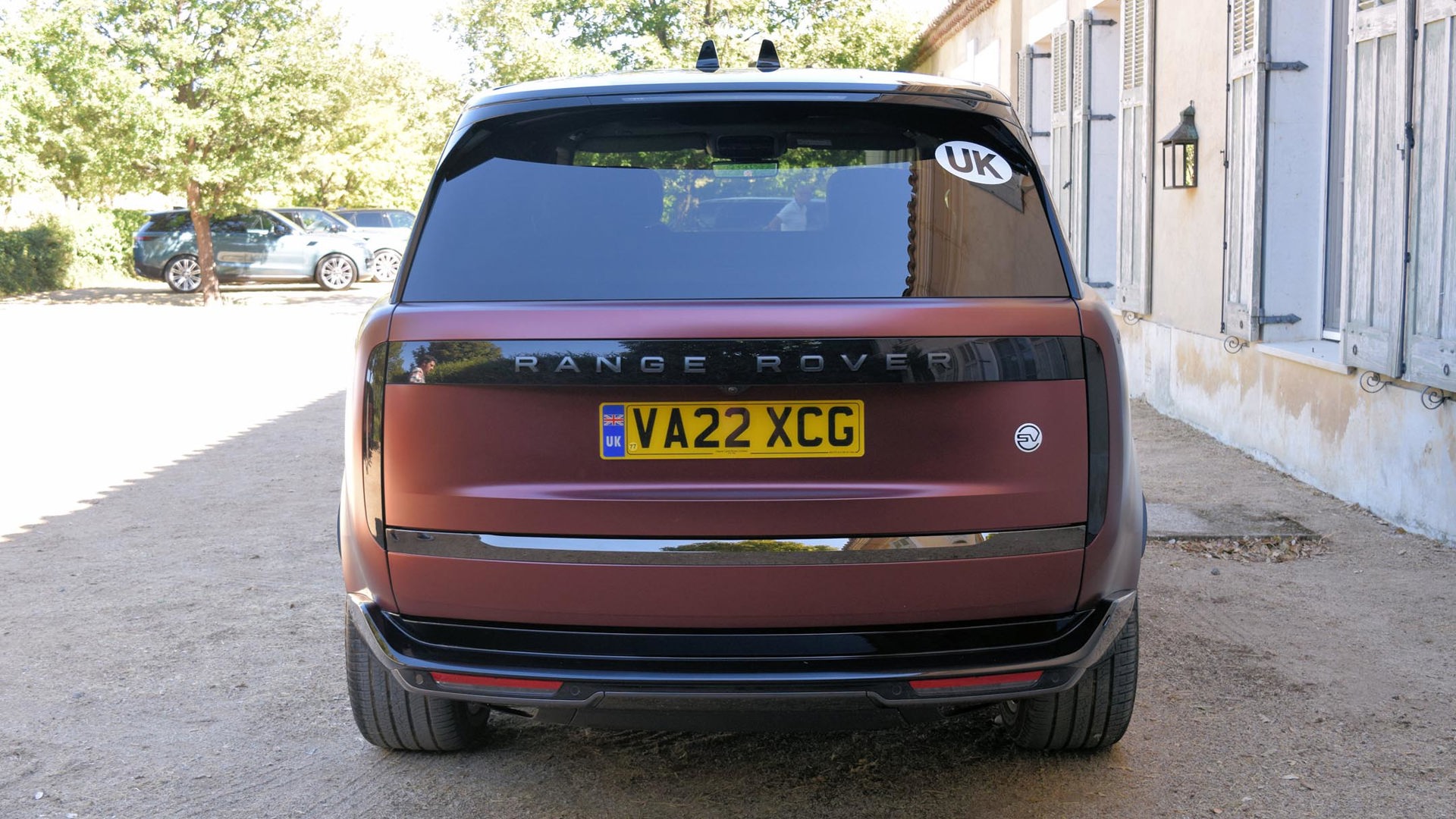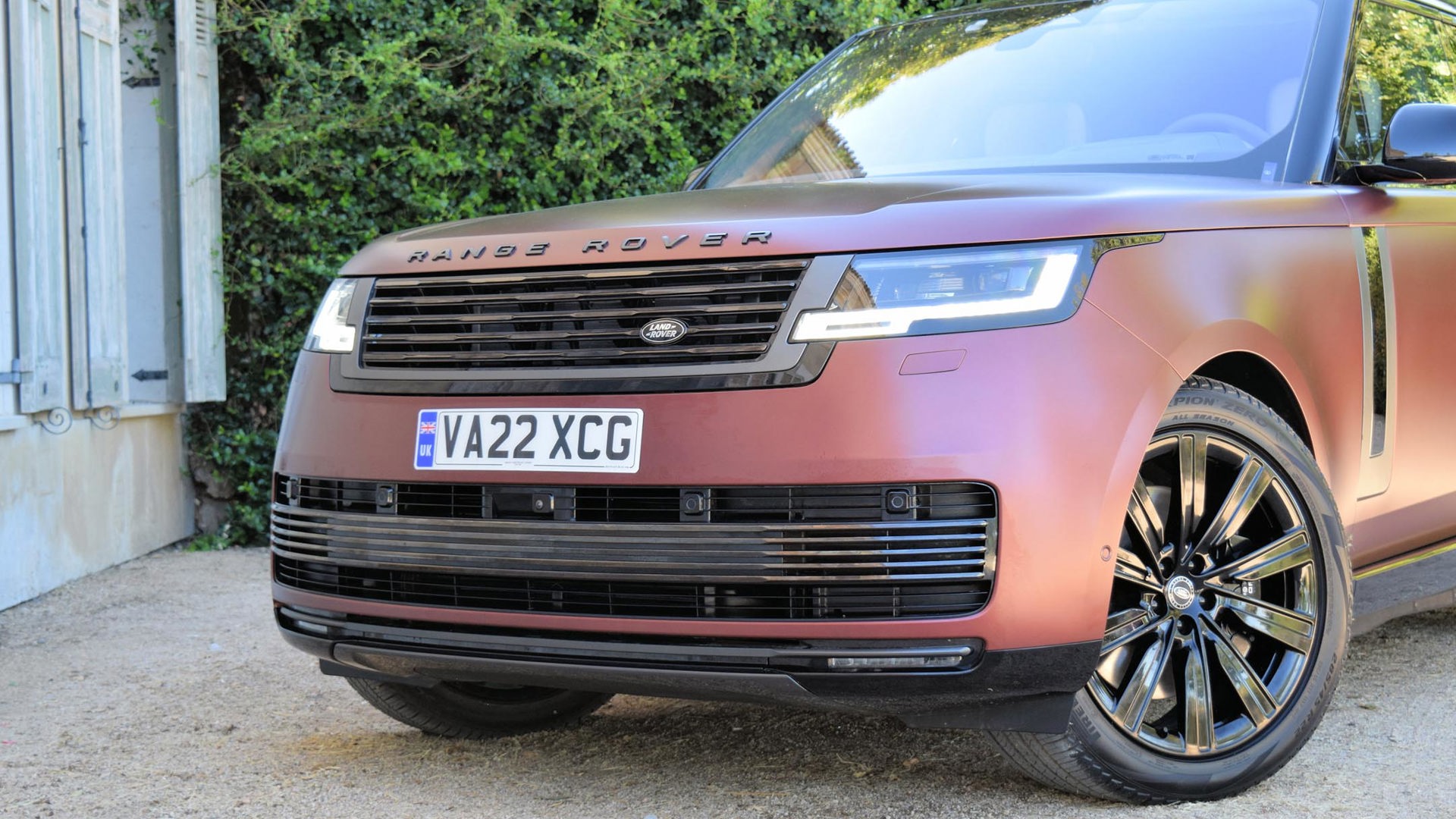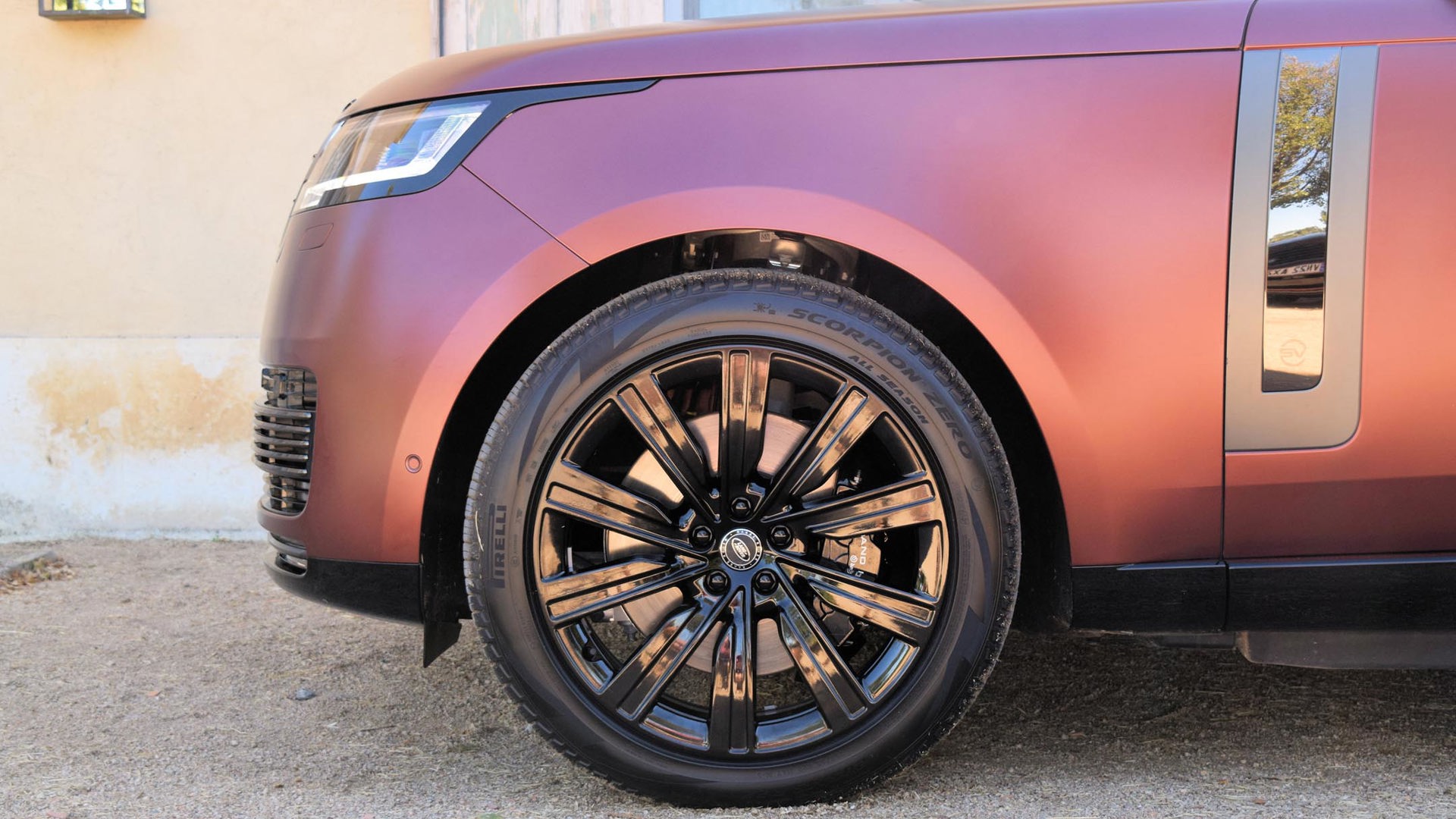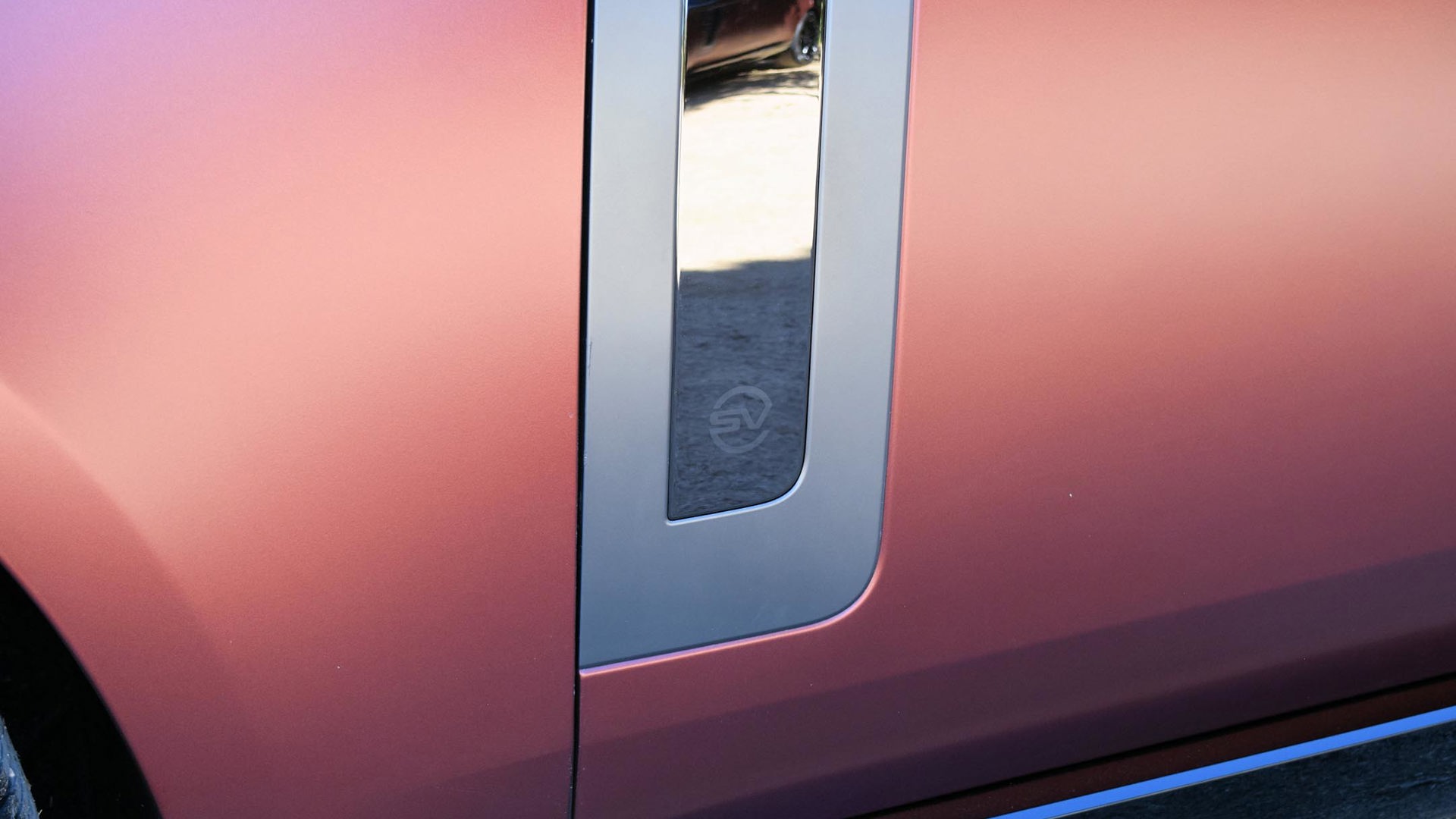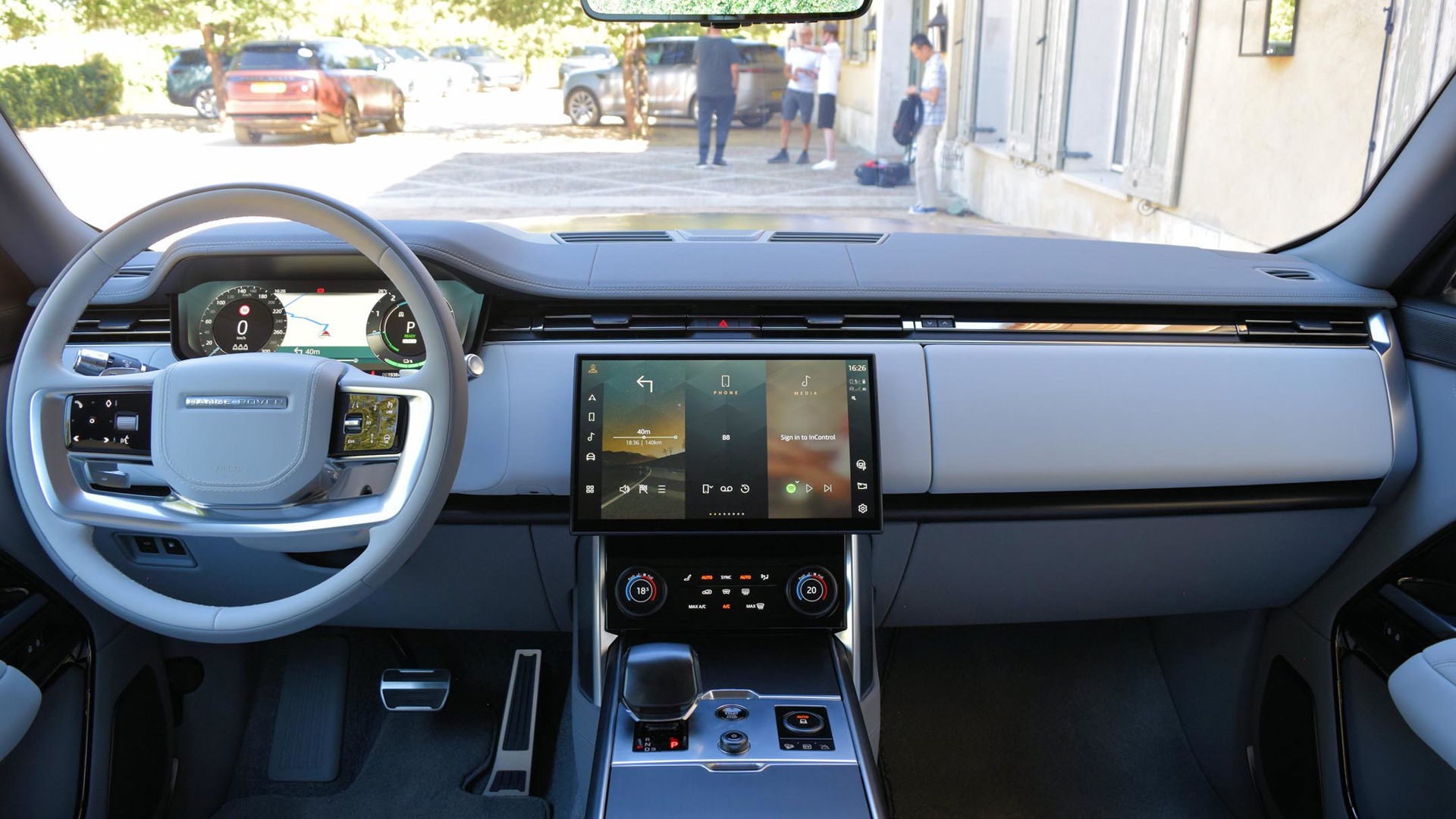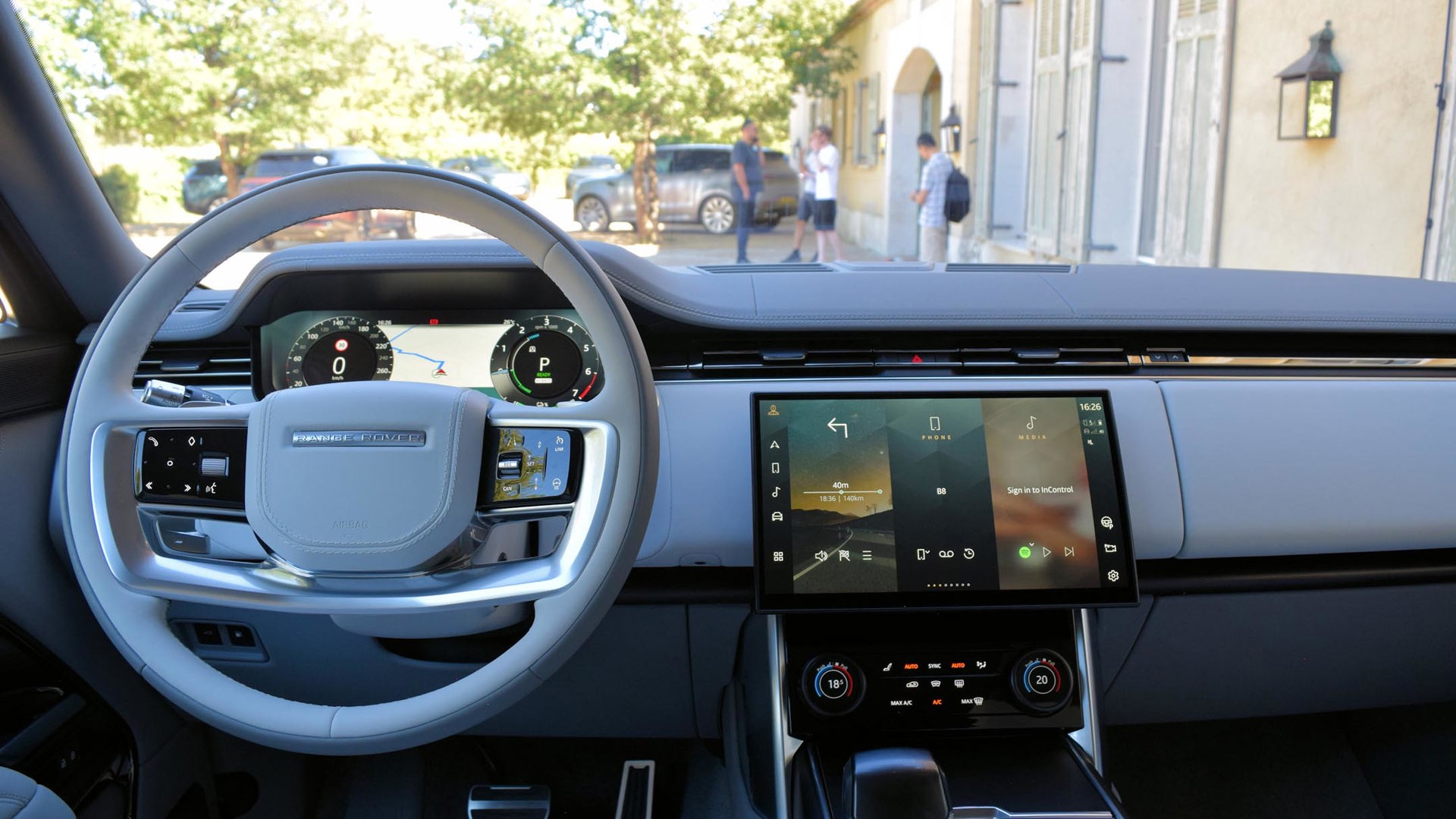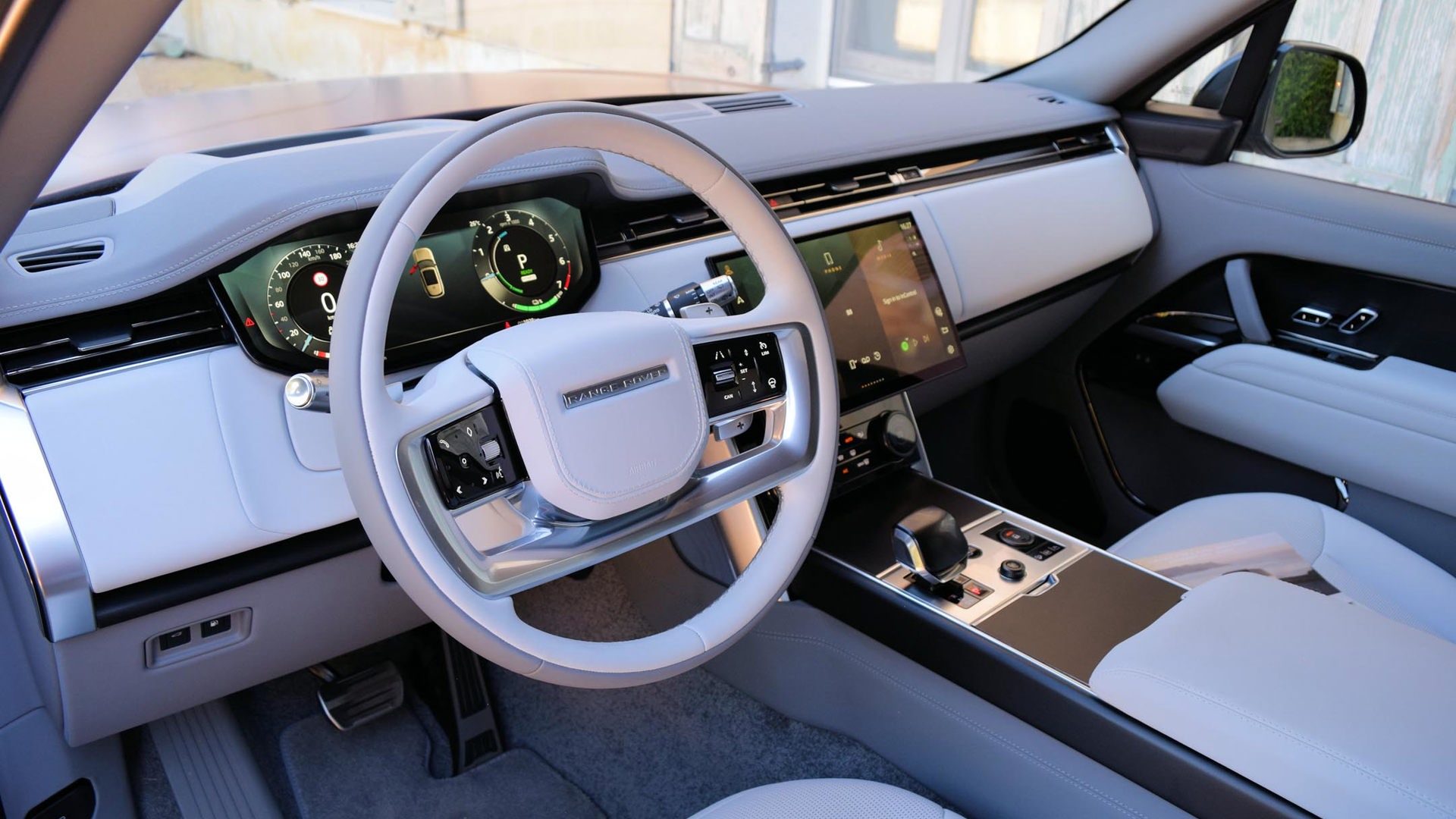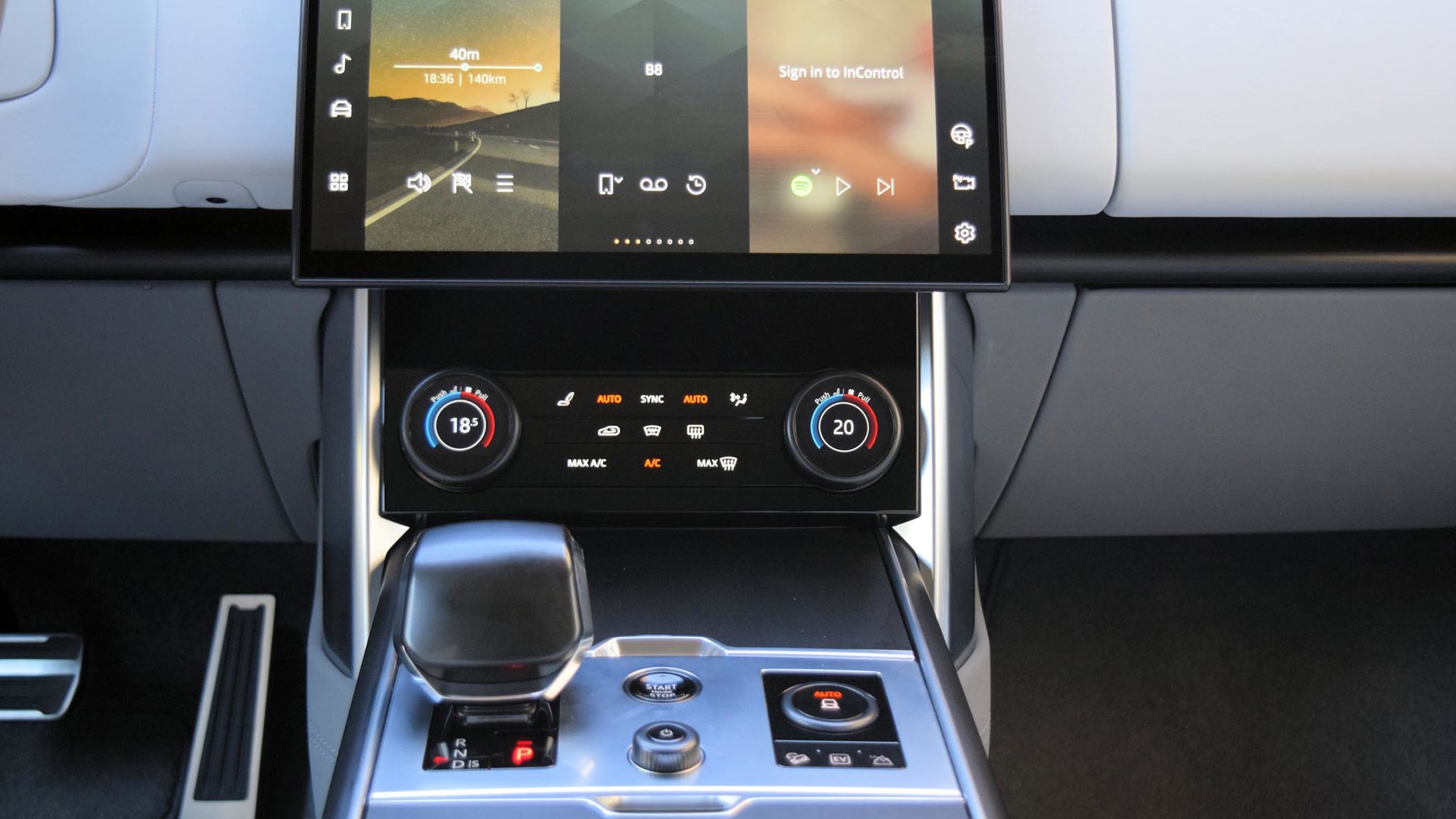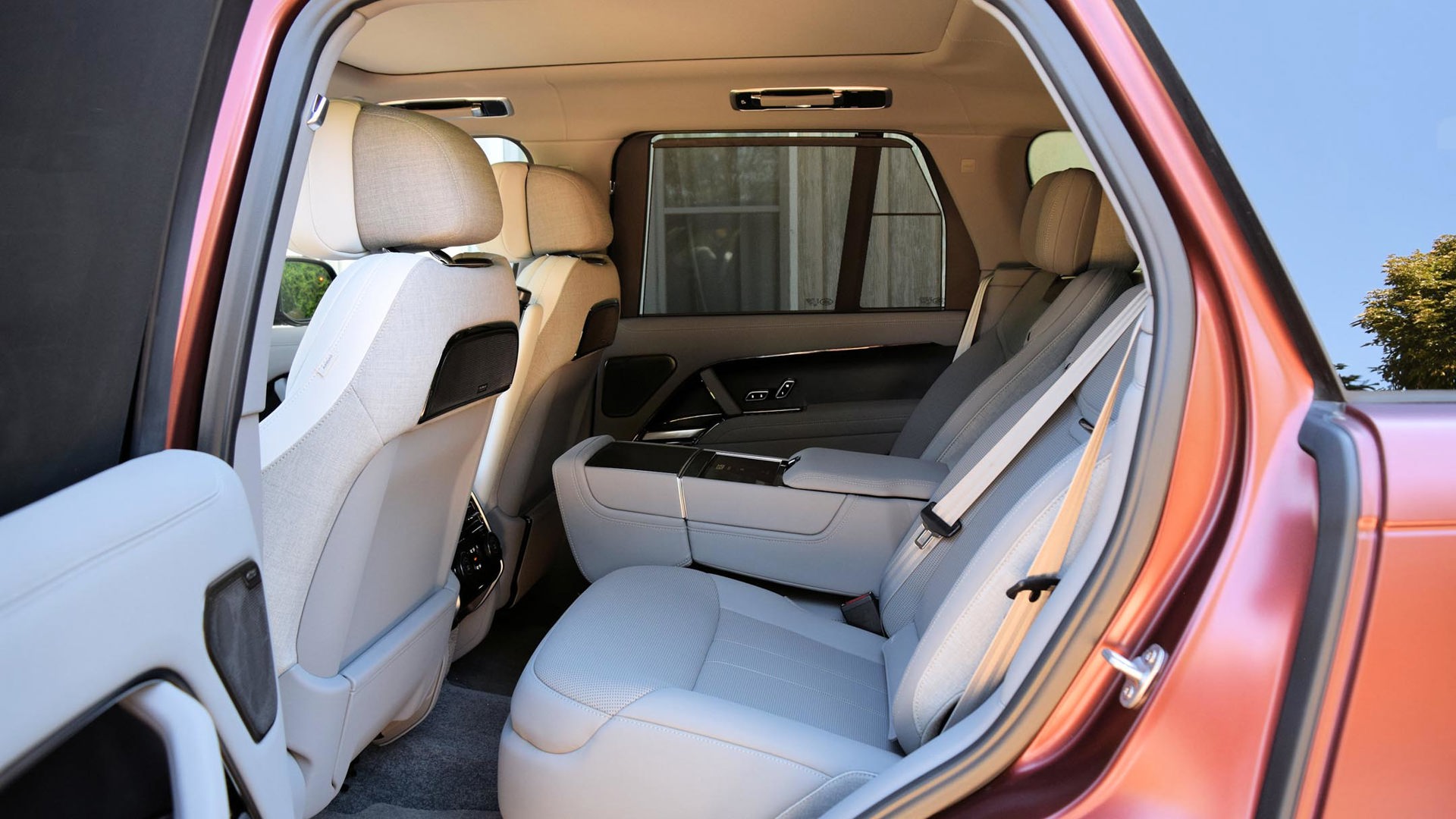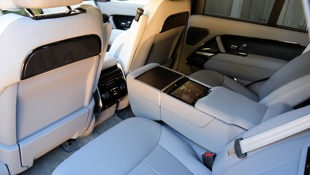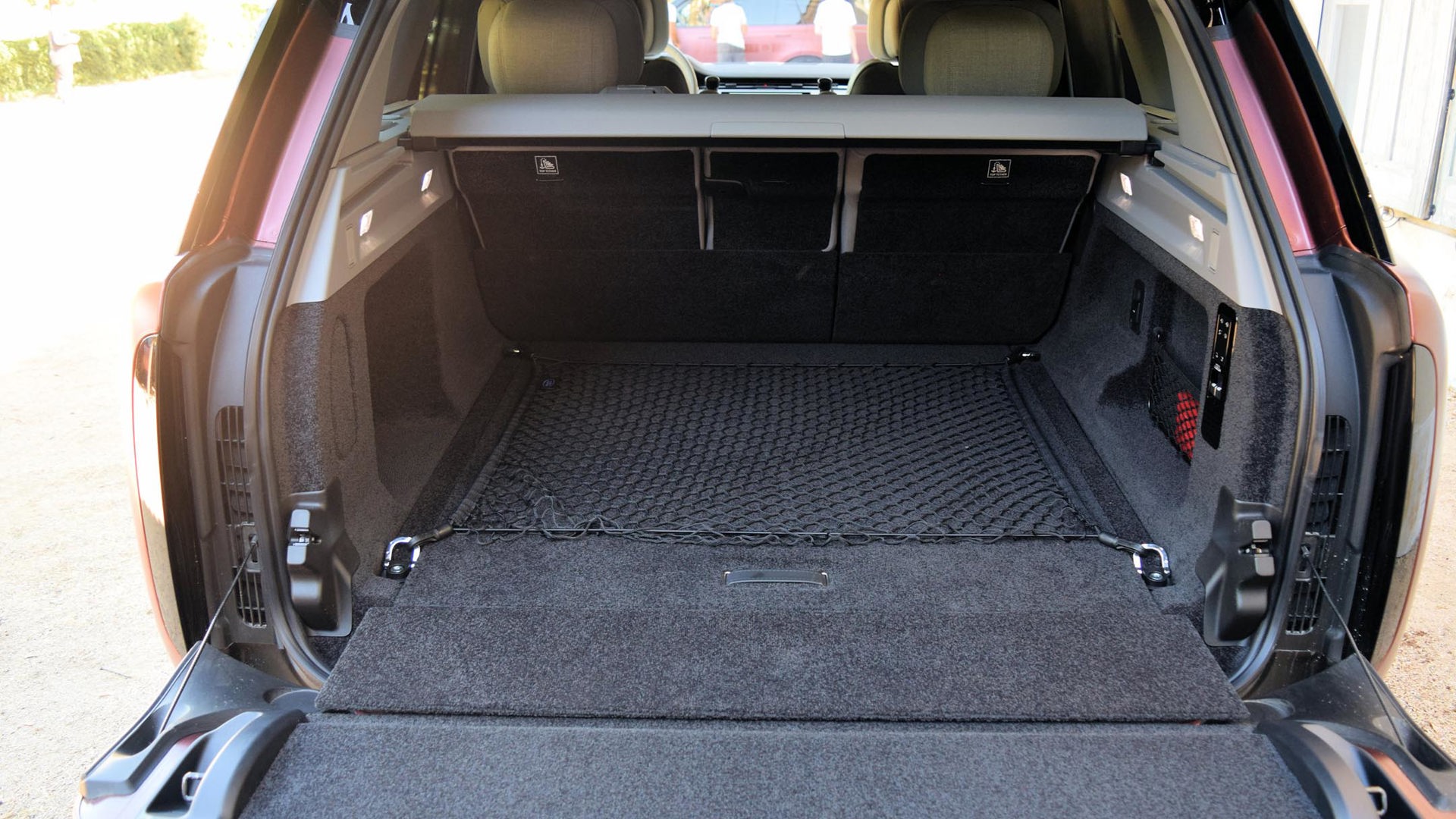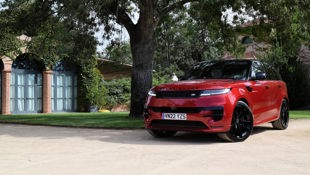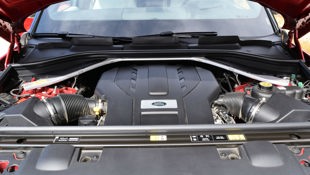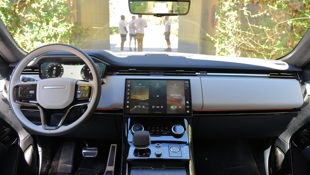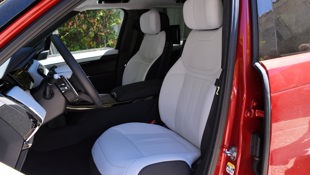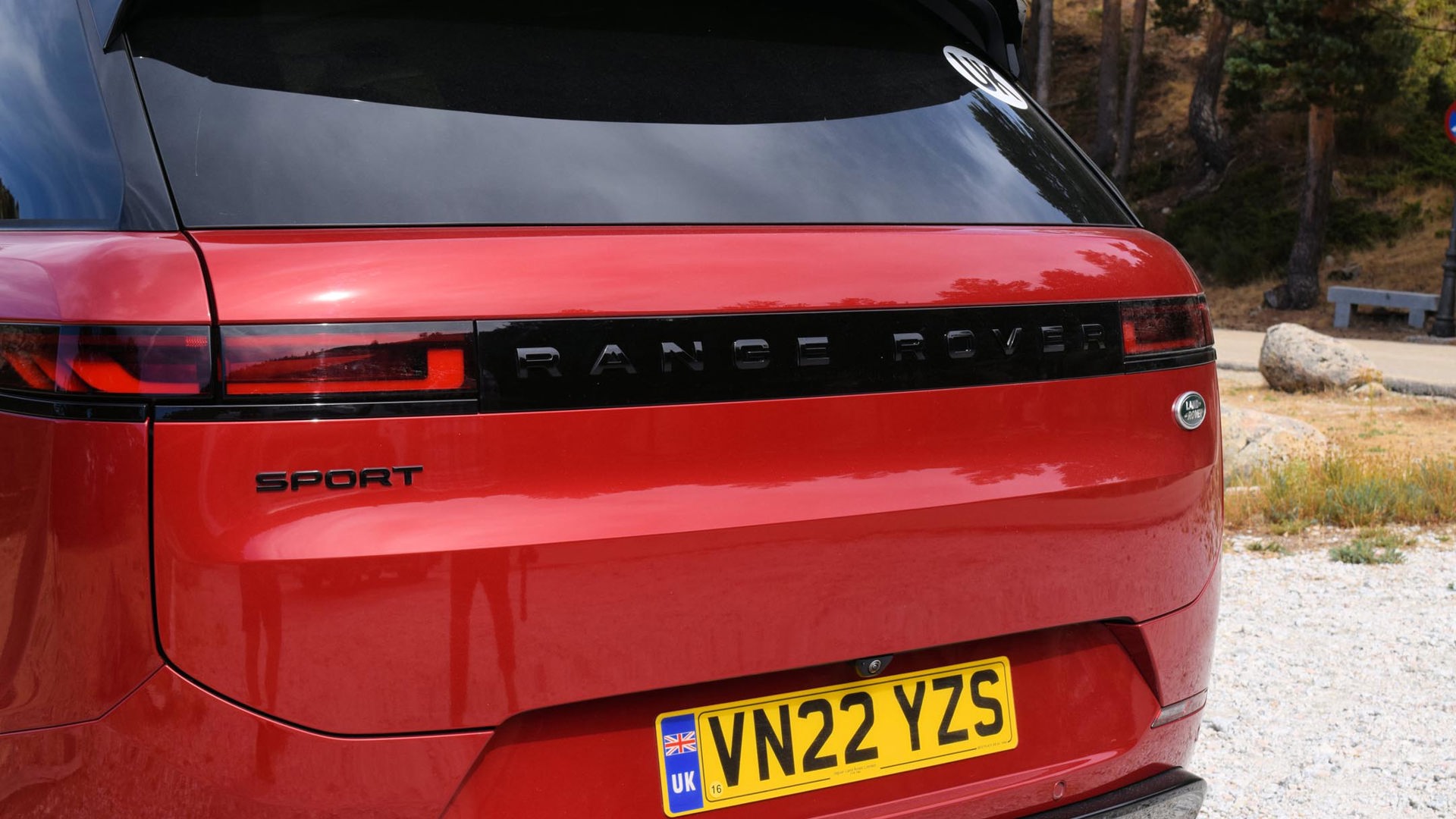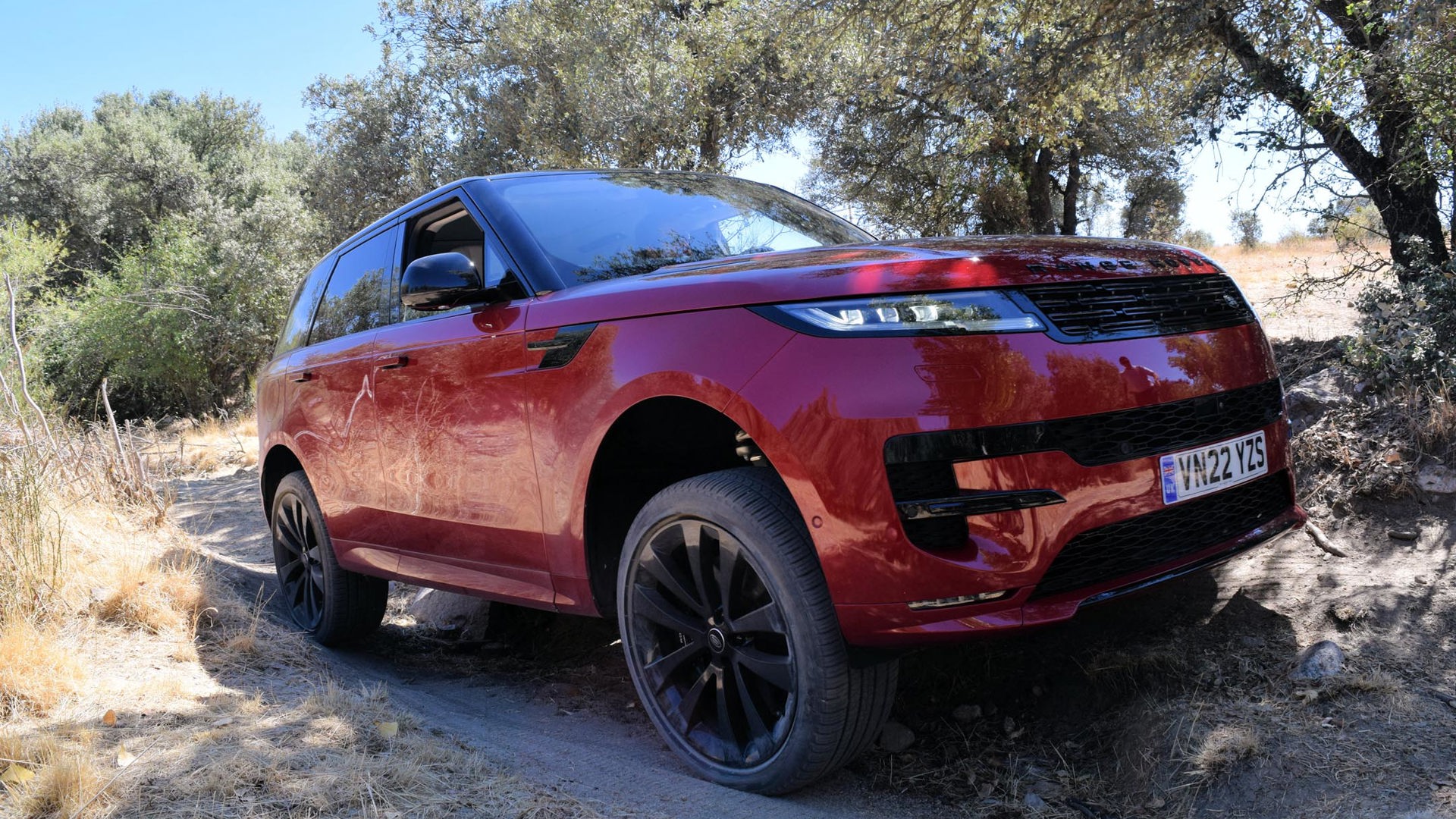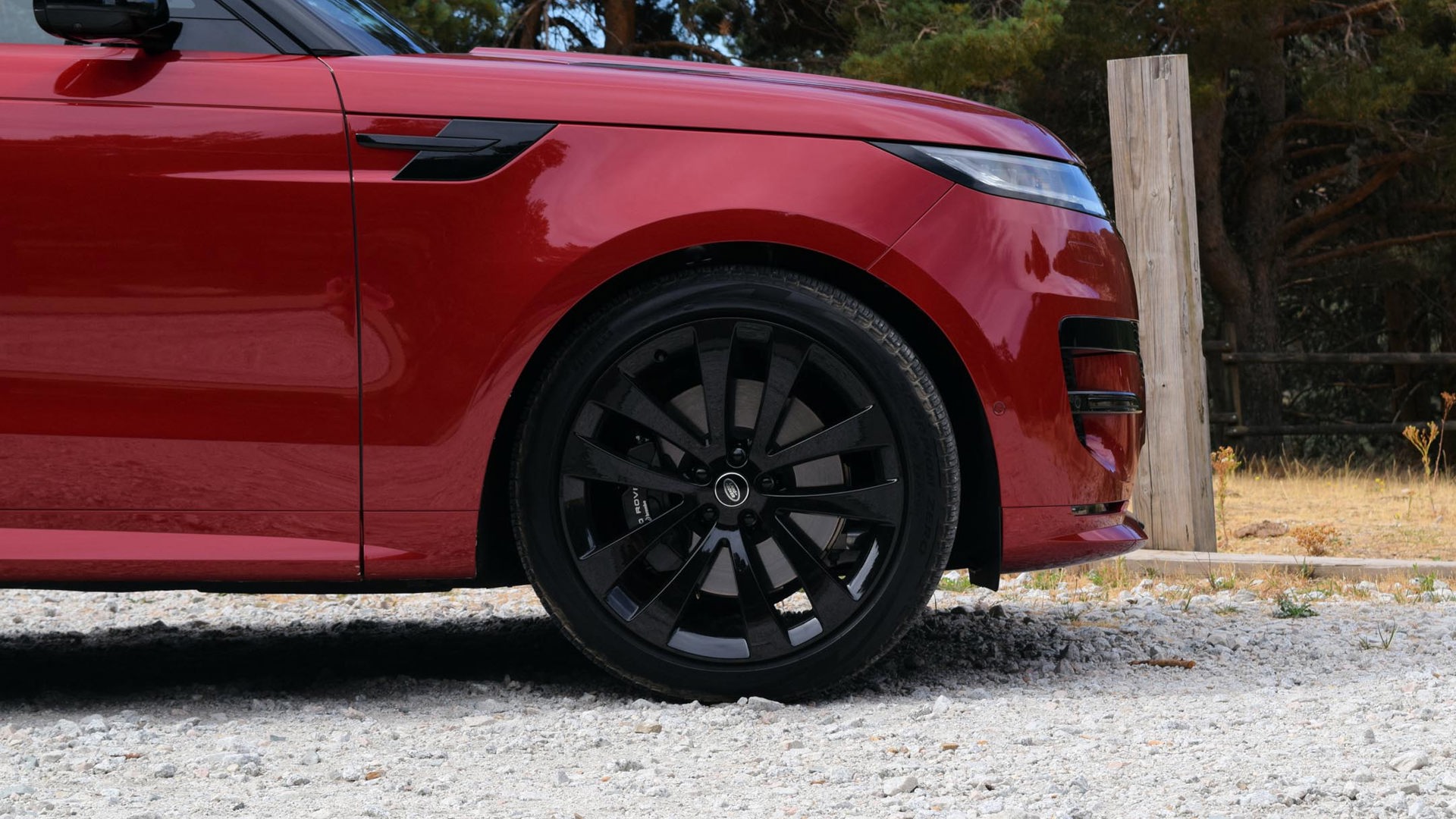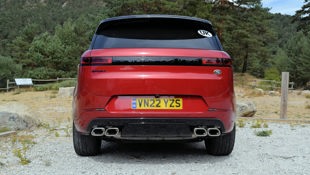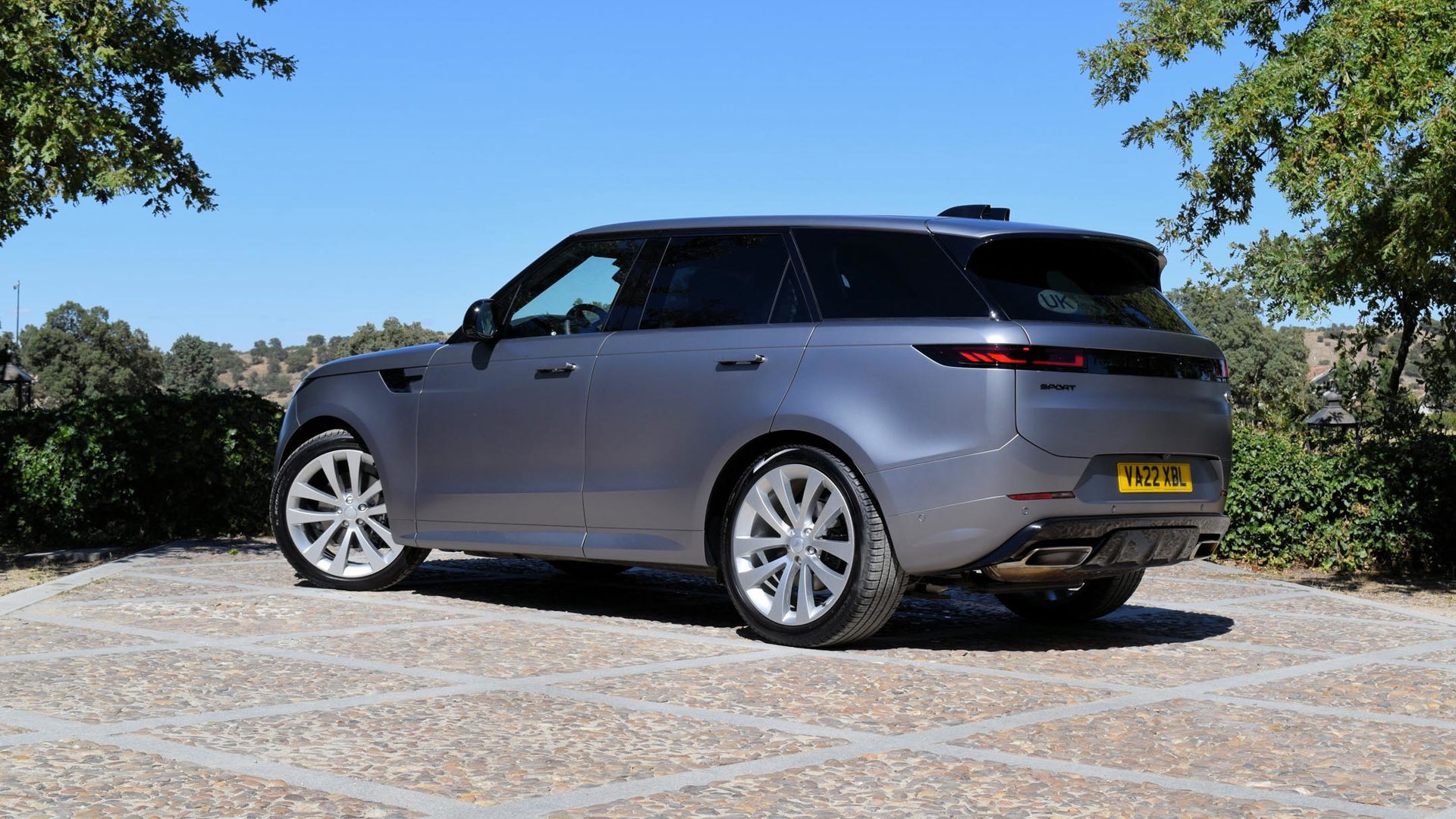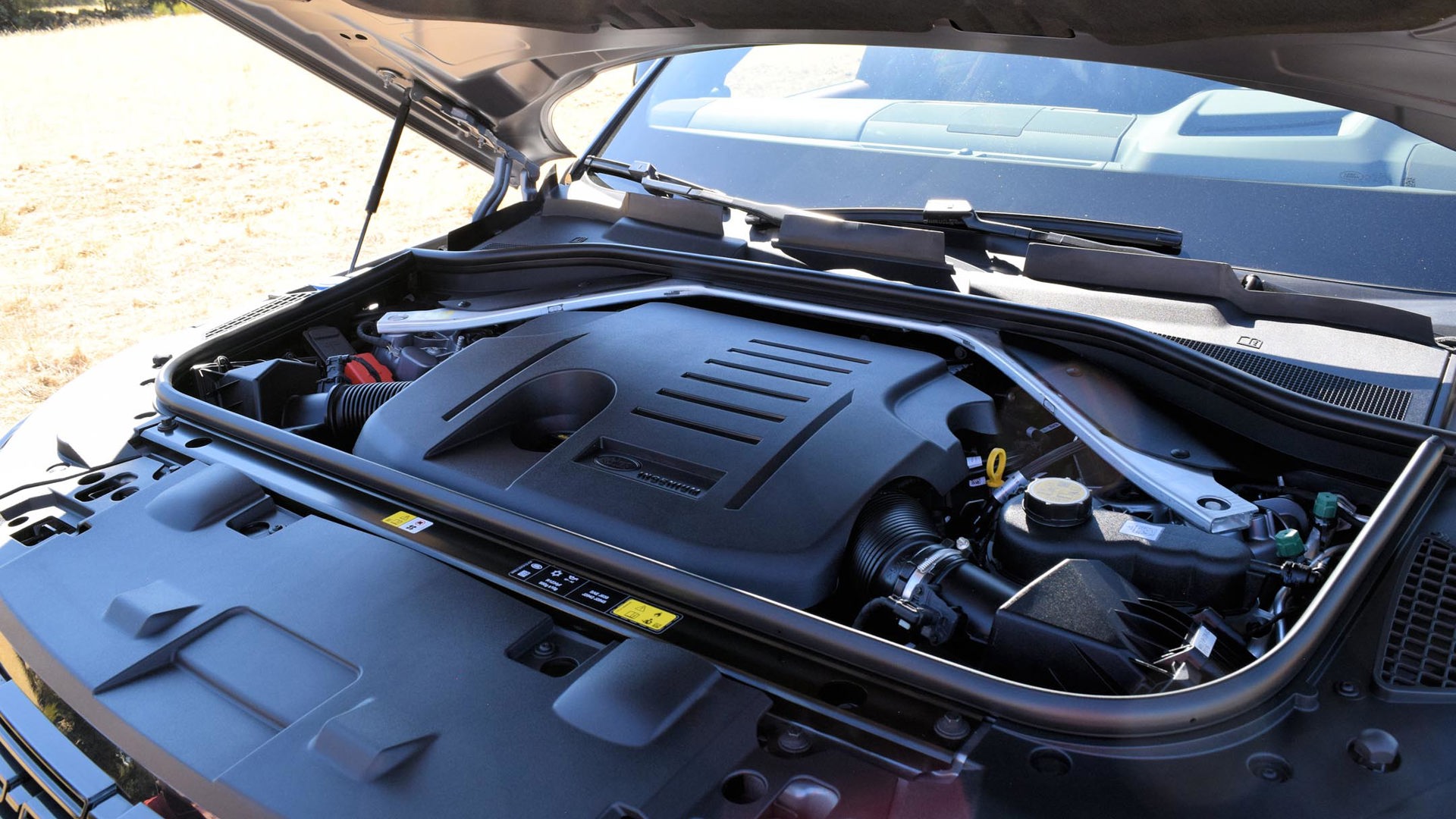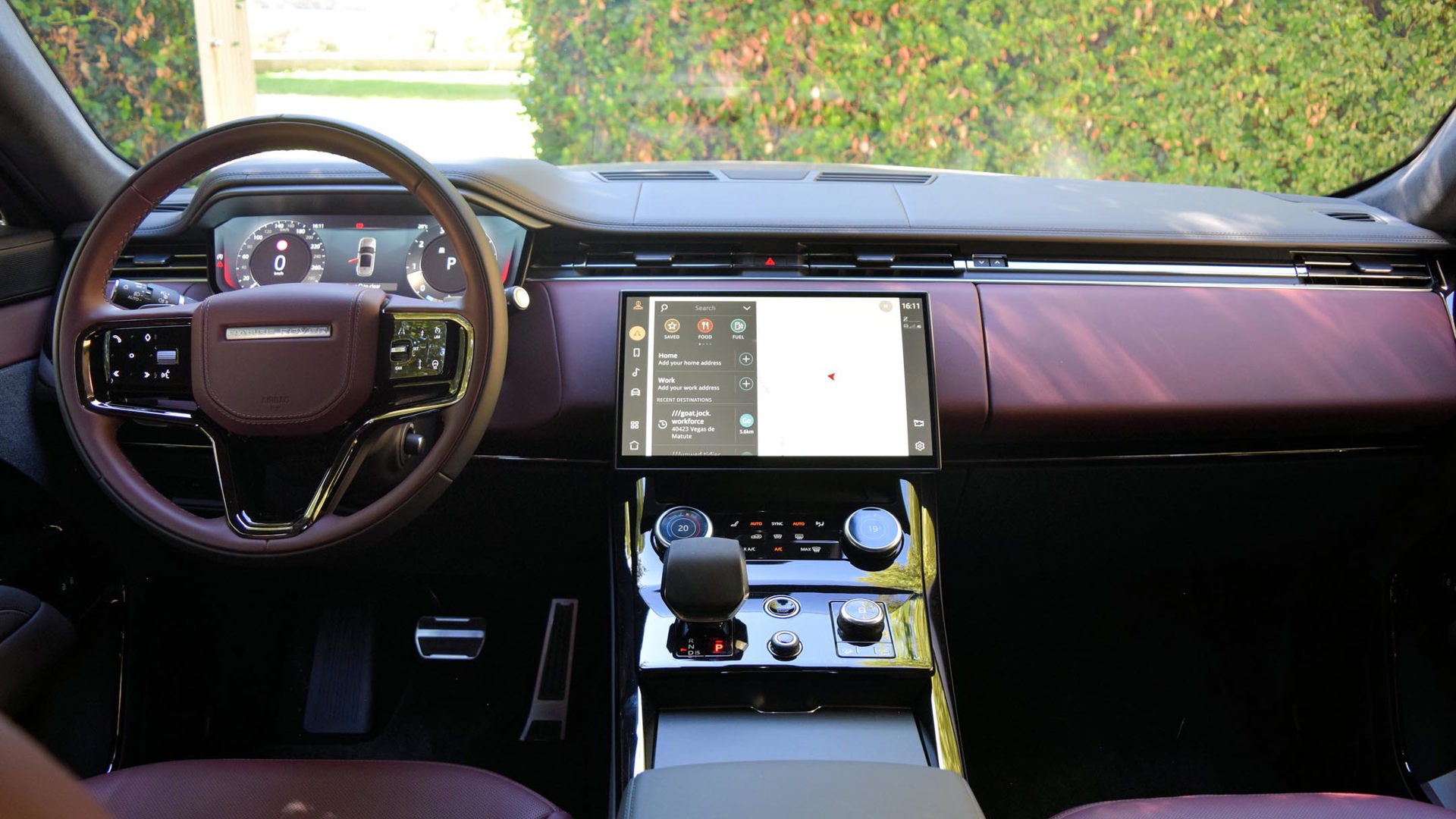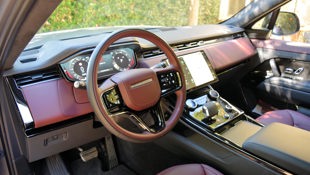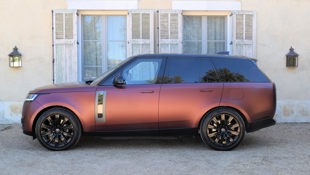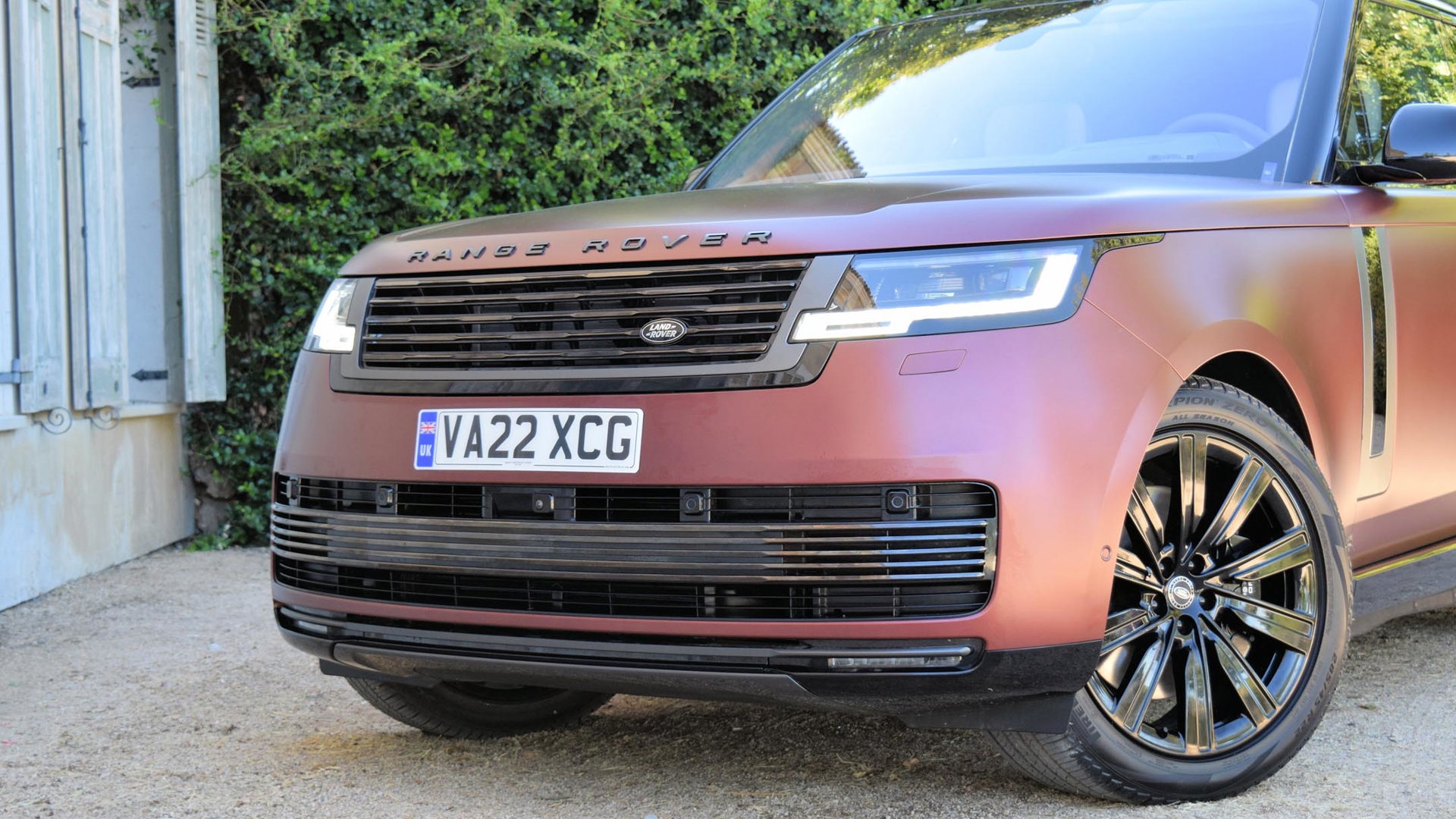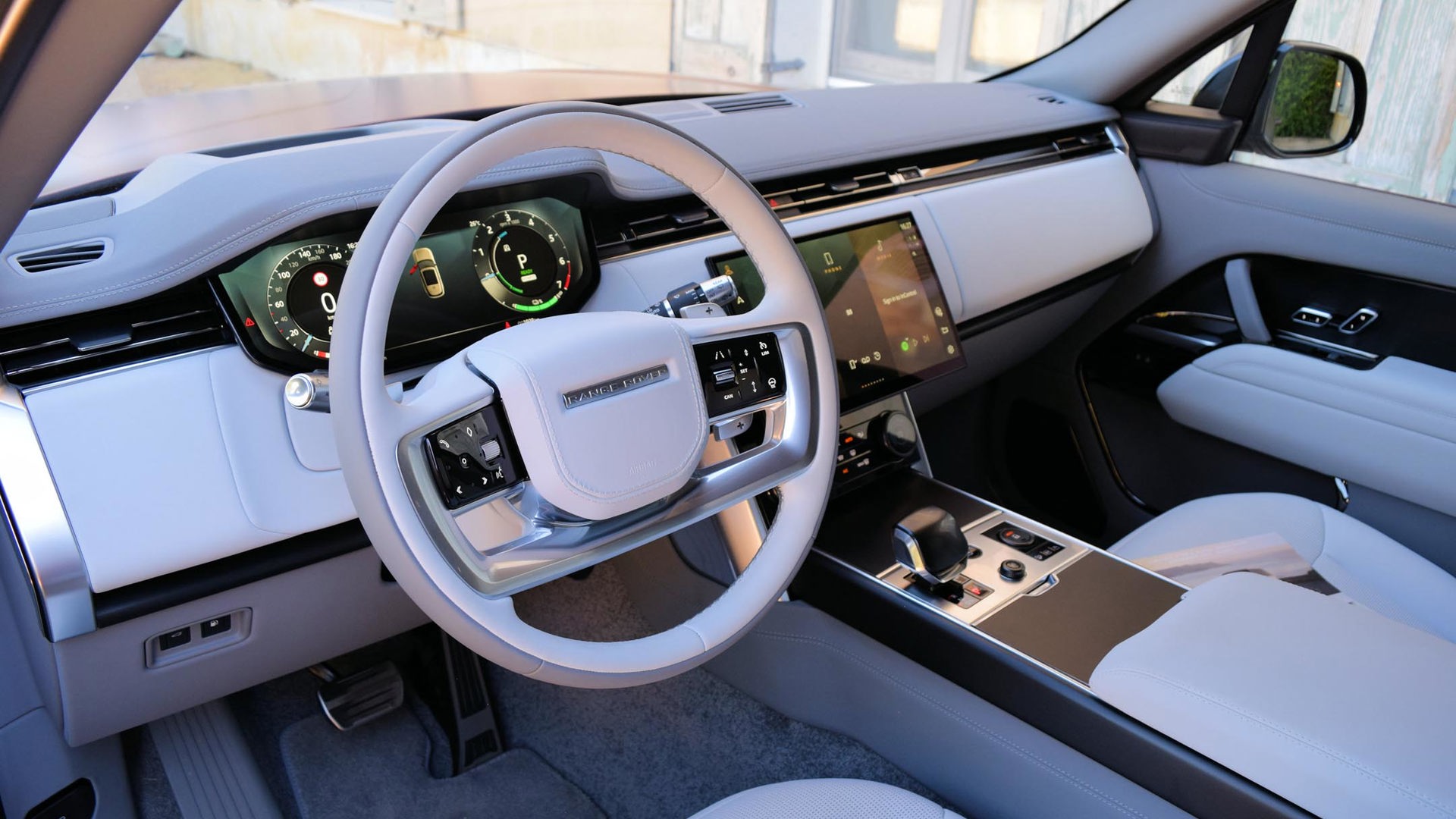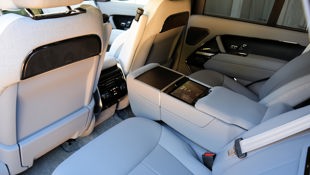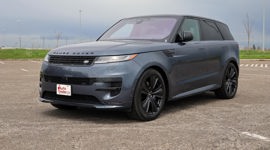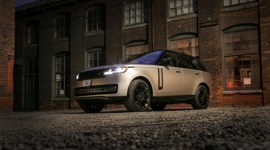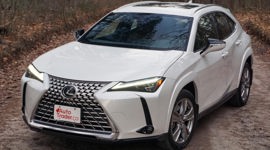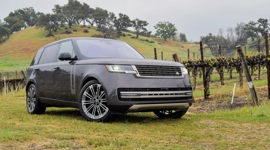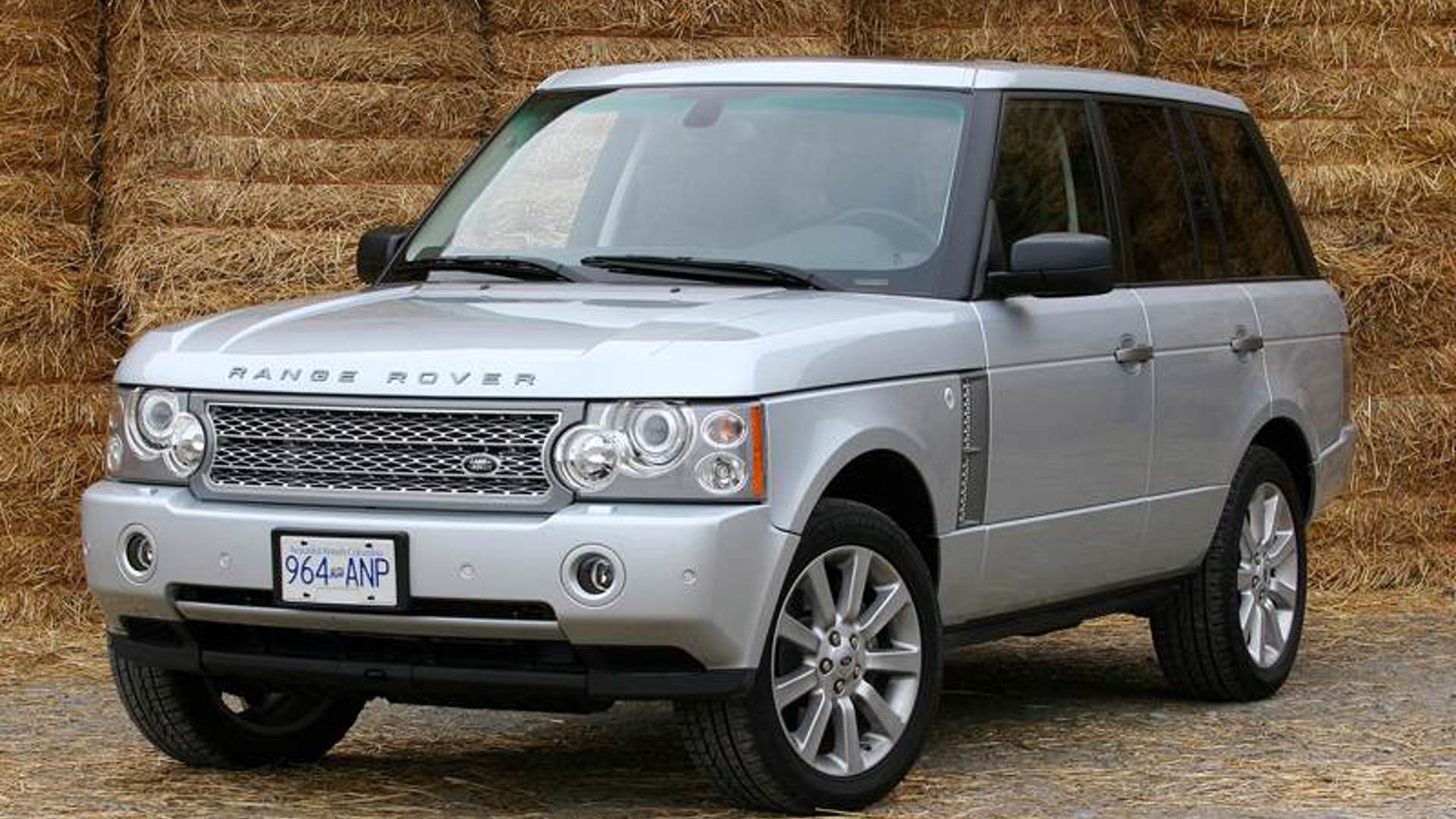Adventuring and going green feel like they should go hand-in-hand, but Range Rover is also adding luxury to the mix, offering rugged, go-anywhere vehicles that feel plushy and high-end. For 2023, the automaker has revamped the full-size Range Rover and Range Rover Sport, improving the lineup in many meaningful ways.
While off-road ability and sexy styling have always been calling cards of the brand, this year it is also prioritizing electrification with surprisingly efficient PHEV models. Here’s a roundup of the new Range Rovers we tested in Madrid, Spain, and what to expect when they land on Canadian roads.
2023 Range Rover Sport
The new Range Rover Sport arrives with a sleek look that borrows a lot of inspiration from its full-size big sibling. The refined exterior includes a slimmer grille design and headlights, but the Sport also adopts the weird double shark fin antenna from the Range Rover, helping showcase just how similar these two vehicles are, for better or worse.
The cabin also looks clean and lacks clutter, allowing both the driver and passenger to enjoy the soft upholstery and premium accents. Instead of having two infotainment screens, the vehicle now uses a single 13.1-inch unit. The screen is decently responsivie and has crisp graphics. I was more impressed with the climate controls: push them to control the seat heating or cooling, or pull them to adjust the fan speeds. The combined function of these controls means they take up less space on the centre console, and given how many features modern luxury cars have, it helps reduce clutter, but takes some getting used to at first.
Since the SUV features four-zone climate control, you’ll find similar knobs in the back, and the outbound seats are also heated and cooled. Passengers can also enjoy a rear seat entertainment system, but one omission that’s missing this year is the optional third-row seats, which used to help the Sport stand out against its competition. Instead, shoppers must now upgrade to the full-size Range Rover to get a third row of seats.
While the cabin is quiet thanks to active noise cancellation and there were no squeaks or rattles during my test drive, some of the touch controls on the steering wheel and door panels feel a bit flimsy and not worthy of the Range Rover Sport’s price tag.
That concern may be picking nits, but it was a very obvious flaw due to the amount of time we spent driving the Sport in and around Madrid, Spain, putting it through many different scenarios. Overall, the Range Rover Sport would make for a solid family road trip vehicle (so long as you only have five people in your tribe). It’s a smooth ride no matter your driving style.
The Range Rover Sport shares its chassis with its bigger sibling. It is 35 per cent stiffer than the outgoing model, which means it’s designed to be both comfortable and responsive. A dual-chamber air suspension system and dual-valve dampers help the Range Rover Sport feel agile and stay flat, not just when making quick lateral transitions, but it also keeps the SUV stable when accelerating or braking.
The Range Rover Sport’s key rivals, including the BMW X5 and Porsche Cayenne, all feel pretty good to drive, however, they don’t pack the same off-road capability and technology as the British SUV. The same air suspension that helps keep the vehicle flat on the road can lift the body to give the SUV 274 mm of ground clearance, allowing the Sport to tackle some pretty tricky conditions.
While it won’t compare to the rock-crawling capabilities of the Jeep Wrangler or Ford Bronco, the folks at Range Rover let us loose on an intimidating off-road course that included steep drops, moguls, tons of rocks, and tight turns. The Sport impressively conquered them all. Several drive modes help to build confidence on various trail surfaces and the SUV also features low range gearing and downhill descent control.
In terms of unique features, there’s an automatic off-road cruise control system that will be handy for drivers new to off-roading. Drivers need to set a maximum speed and a comfort level, and the vehicle will attempt to maintain that speed but will slow down if the ride gets too choppy. The car packs a bajillion sensors to inform that system and help it decide whether to speed up or slow down. Drivers can also take advantage of several camera angles to help place wheels with precision, which is useful when the trail narrows or if you want to avoid falling off a cliff.
Three powertrains are available to motivate the Range Rover Sport, and of course, they all pack all-wheel drive. The entry-level P400 model uses a 48-volt mild-hybrid system with an inline six-cylinder motor. With 400 horsepower, this motor is more than adequate for daily use, feeling more upbeat and powerful than some of the six-cylinder options in the BMW X5, Porsche Cayenne, and Mercedes-Benz GLE-Class.
From there, shoppers can upgrade to a 532-horsepower BMW-sourced V8 P530 model that adds some aggressive burbling sounds and will help satisfy your need for speed with a 4.5-second zero-to-100-km/h sprint.
Range Rover Sport PHEV
Just like the full-size Range Rover, the Achilles heel of the eight-cylinder model is its fuel consumption, so the automaker is offering a new plug-in hybrid model known as the P440e. It uses a 38-kWh battery along with a 105 kW electric motor to give the Sport about 77 km of electric range.
That’s pretty impressive, but the car also features DC fast charging support, allowing it to take advantage of 50-kW chargers and go from zero to 80 per cent in under an hour. That’s a rarity, with only one other PHEV crossover, the Mitsubishi Outlander PHEV, offering fast charging support. The battery will recharge from empty in about five hours on a more traditional 7-kW charger, but combining the electric powertrain with the 434-hp turbocharged inline six provides a healthy amount of power and torque.
It feels a step slower than the V8 at times, but the smooth power delivery provides elegant takeoffs in addition to enhancing the already quiet cabin and improving fuel efficiency. All four wheels get powered in the car’s EV mode and that’s true even when you switch to the Dynamic Drive mode. Slotting the gear selector to S gives you the full combined power of the system. There are also a Hybrid and Save modes for managing the battery range, but 77 km feels like plenty for drivers seeking to not burn a drop of fuel when running errands around town. Drivers can then use the powertrain like a traditional hybrid for longer journeys.
Range Rover PHEV
We also experienced the same plug-in powertrain in the bigger and more luxurious Range Rover SV. With their snarly noise and penchant for speed, V8s always know how to make a good entrance, however, an exit is just as important, and the way the PHEV Range Rover glides away is second only to none. The quiet nature of the powertrain suits the executive class Range Rover SV like a speedo, even if the performance of the gas-electric hybrid setup feels just a tick slower than the eight-cylinder model. The full-size Range Rover is far from a dance partner on winding roads, but the added hybrid components didn’t hinder its on-road agility.
It has the same drive modes and specs as the Sport model, but since I drove this model into downtown Madrid with guided navigation, the vehicle saved a bit of battery life for the city section of the drive. It did this without any extra input from me, as the city is geofenced in the GPS as a Low Emission Zone, which is pretty clever.
Like the Sport model, the Range Rover should net about 70 km of range and supports 50-kW DC fast charging. It should cost north of $135,000, excluding the new luxury taxes and other fees.
Final Thoughts
And while the Range Rover Sport has improved this year, it’s concerning how much more the automaker is asking for it. The starting MSRP of $101,750 represents an increase of nearly $18,000 from the last generation (although less powerful) entry-level model. The PHEV models ask for an additional $20,000, with a starting price of $123,050. While the German PHEV competition from Porsche and BMW feature less range and less off-road cred, they’re available for less money. On the other hand, if you want an SUV to take you almost anywhere, no brand other than Range Rover will fit the bill.
